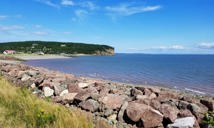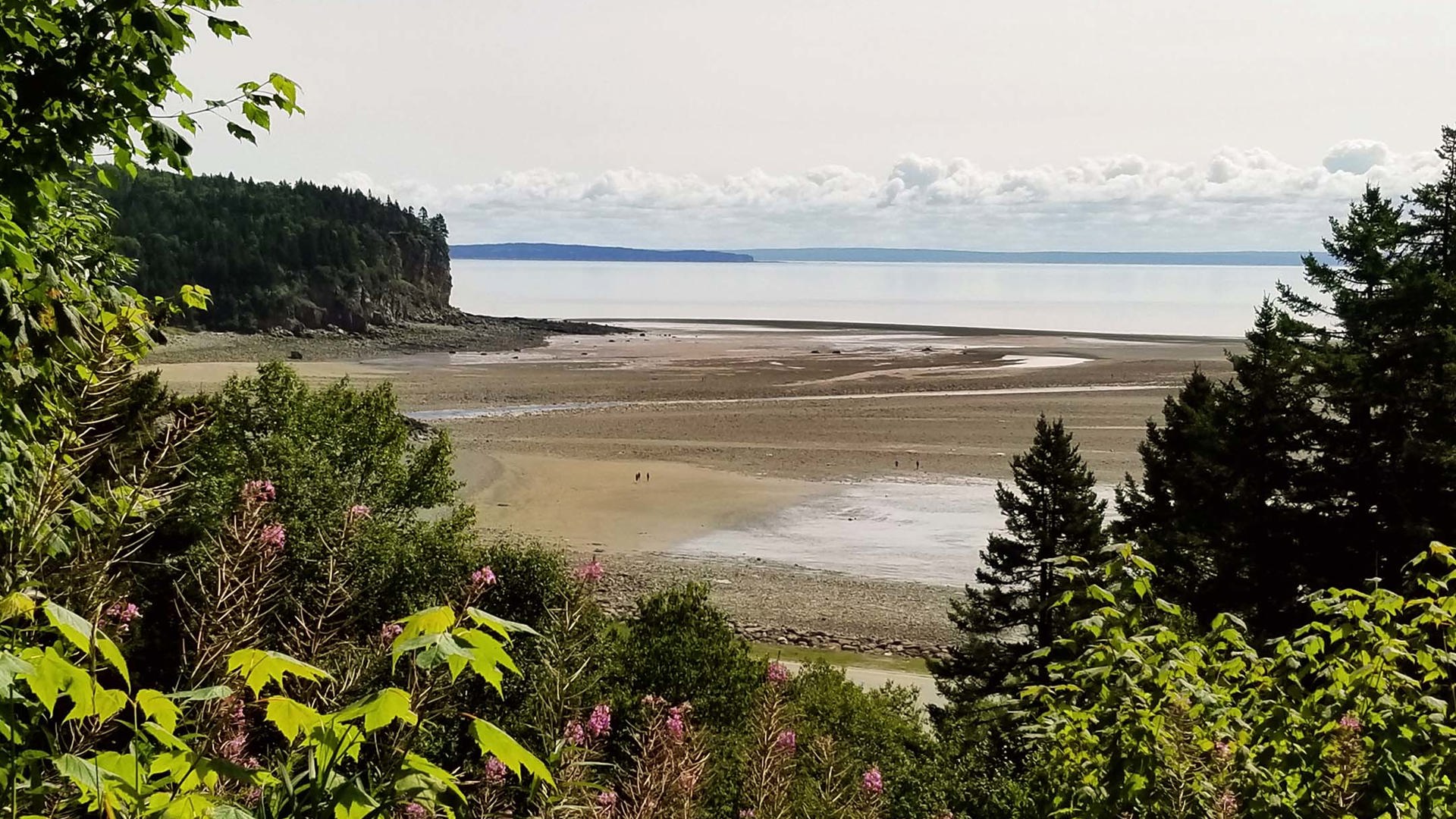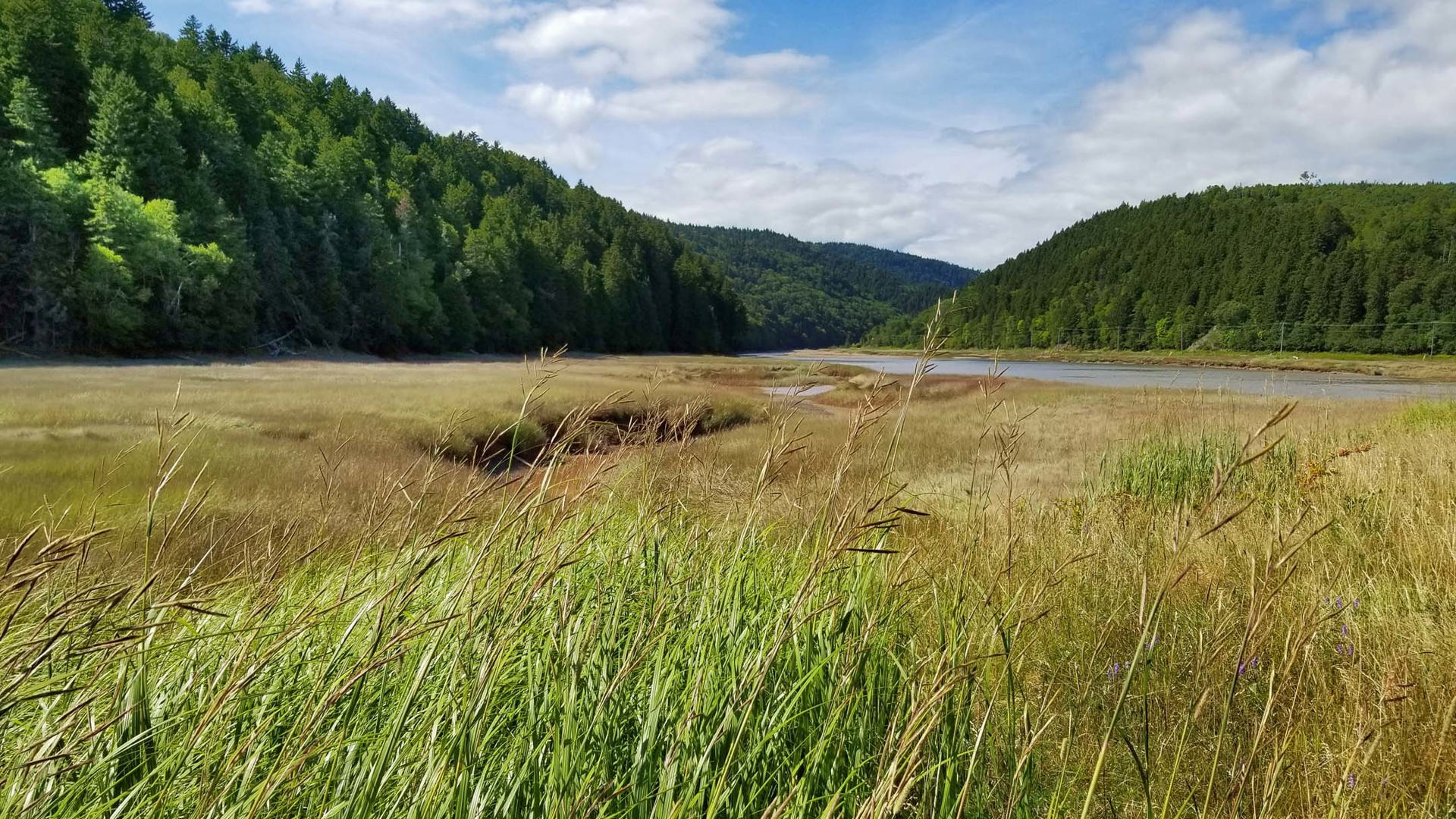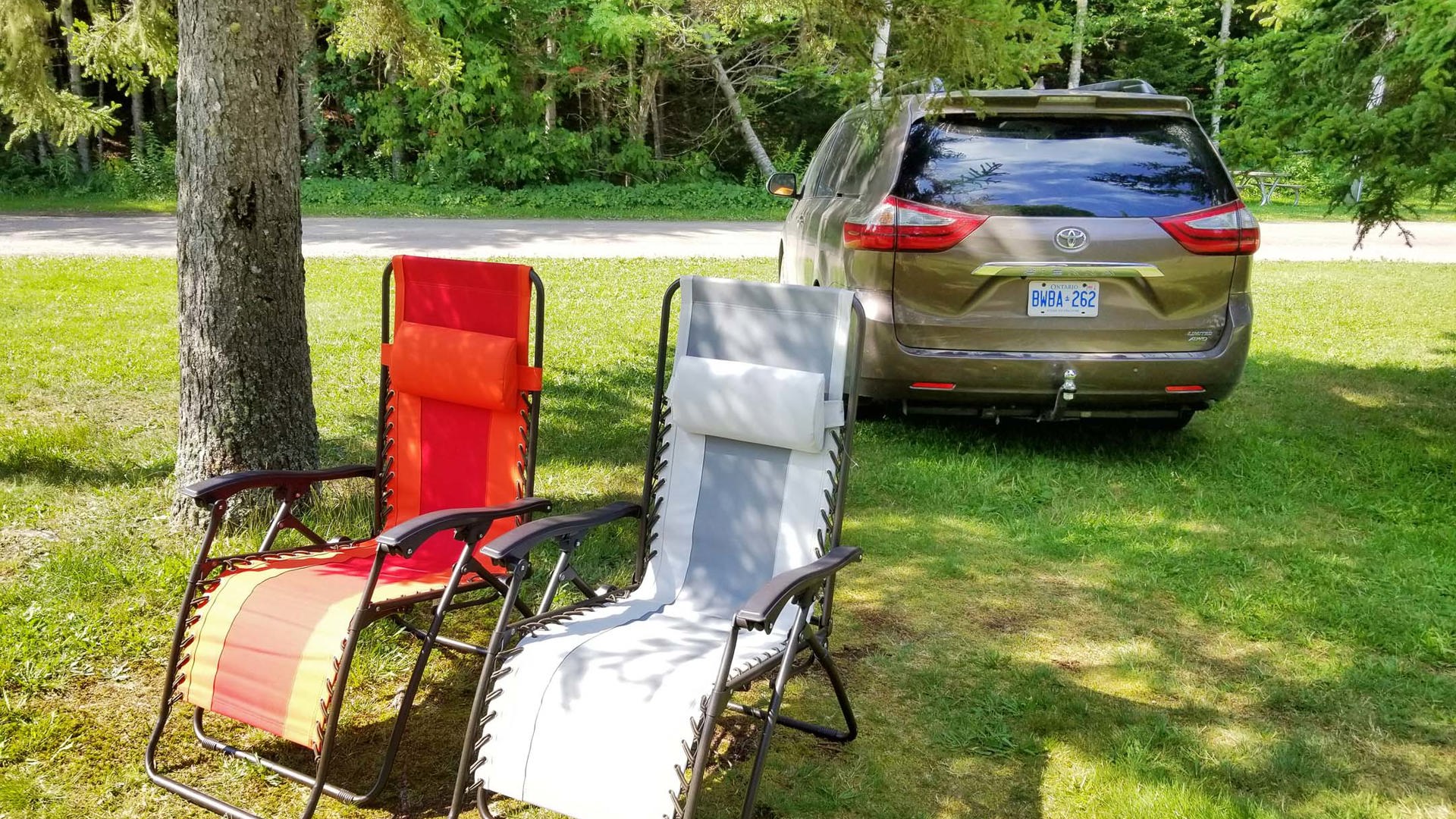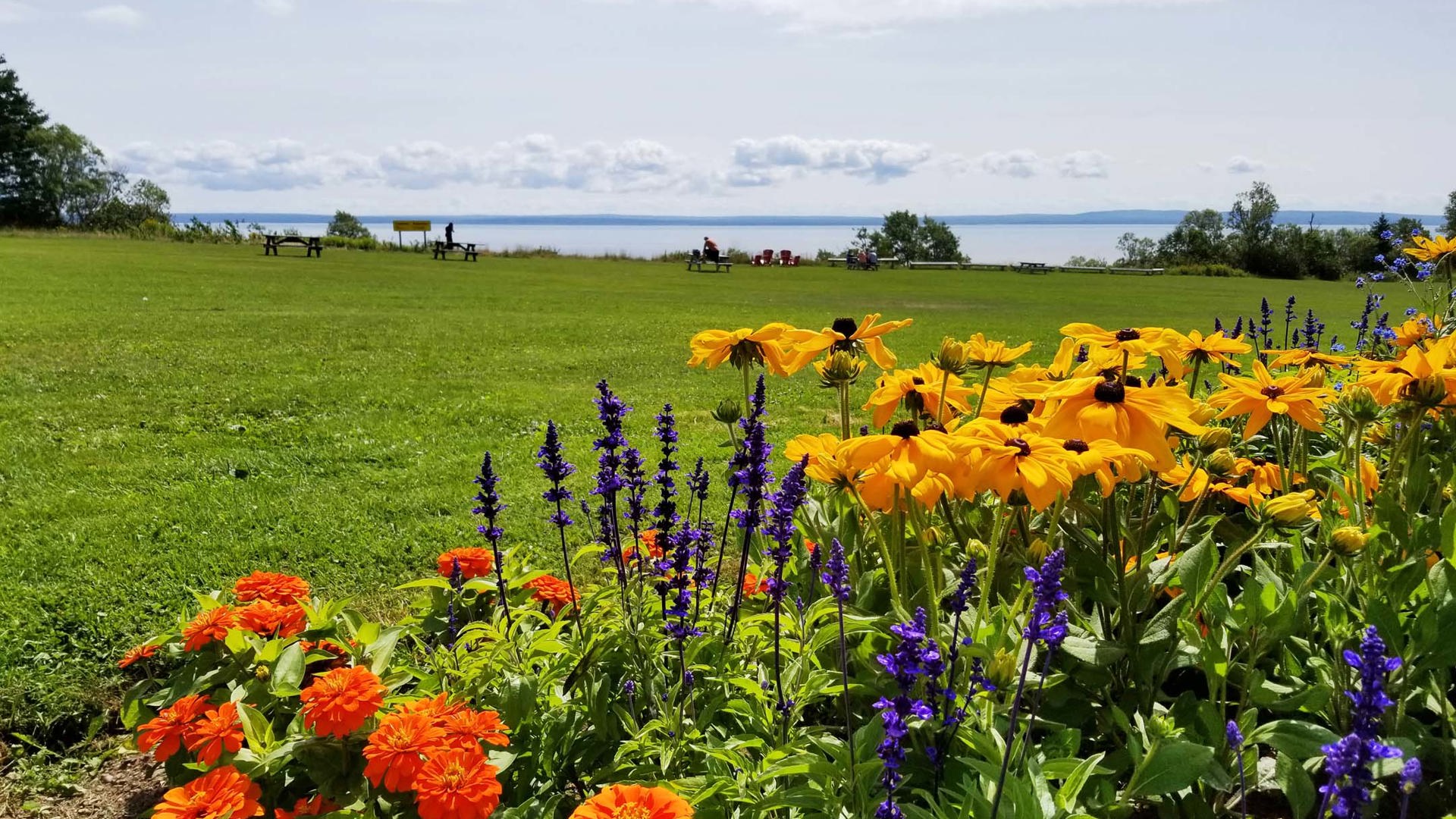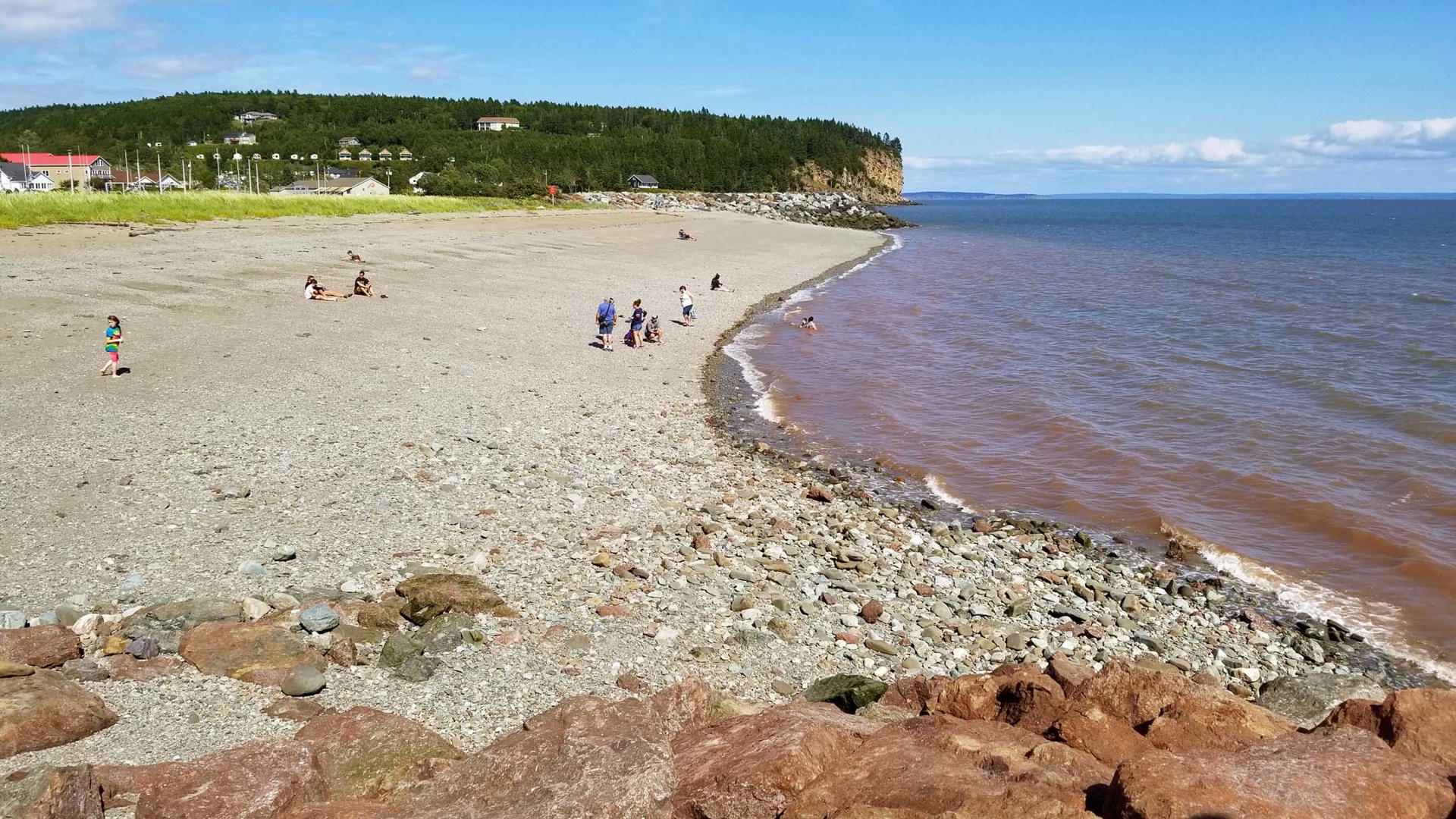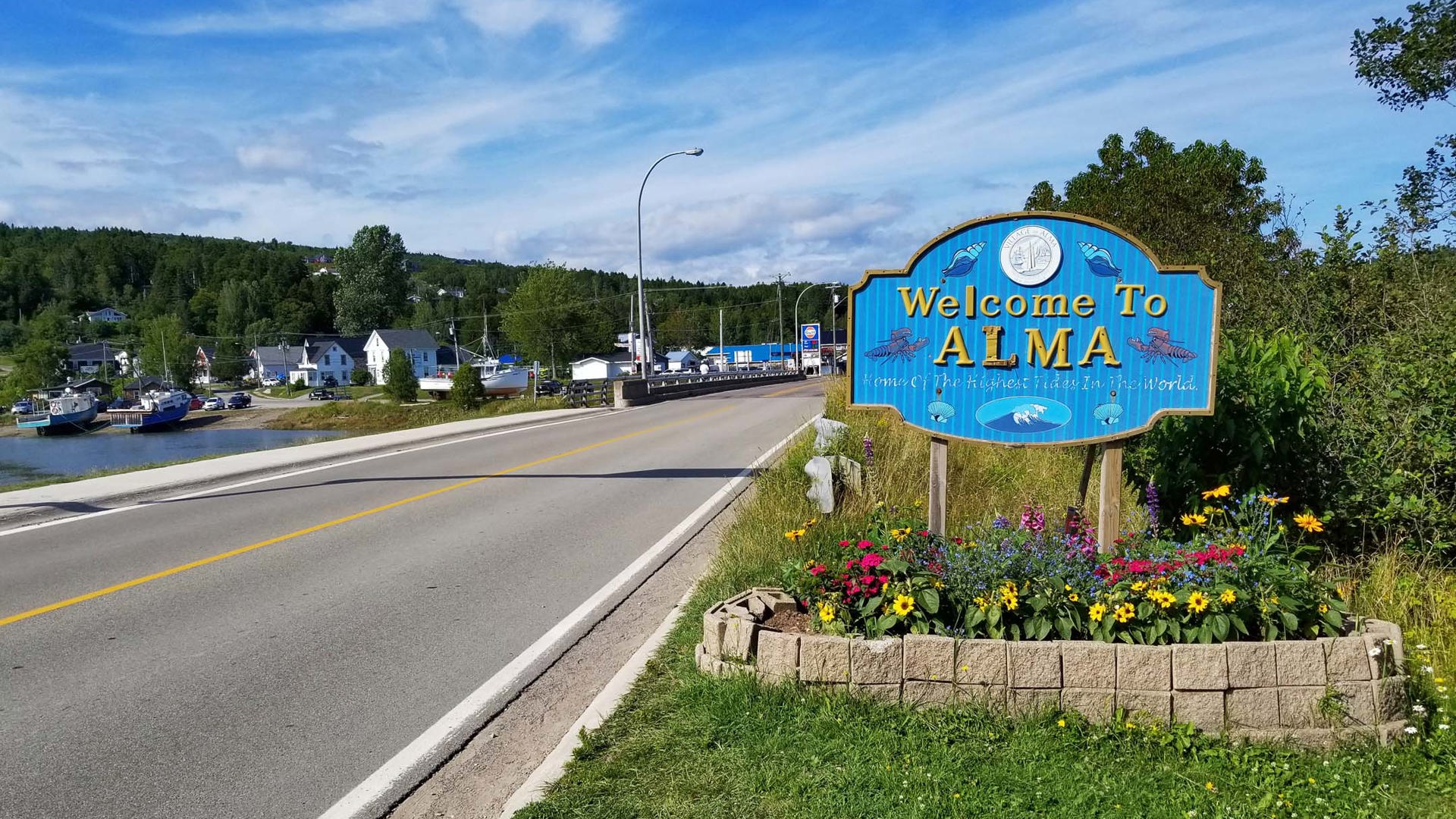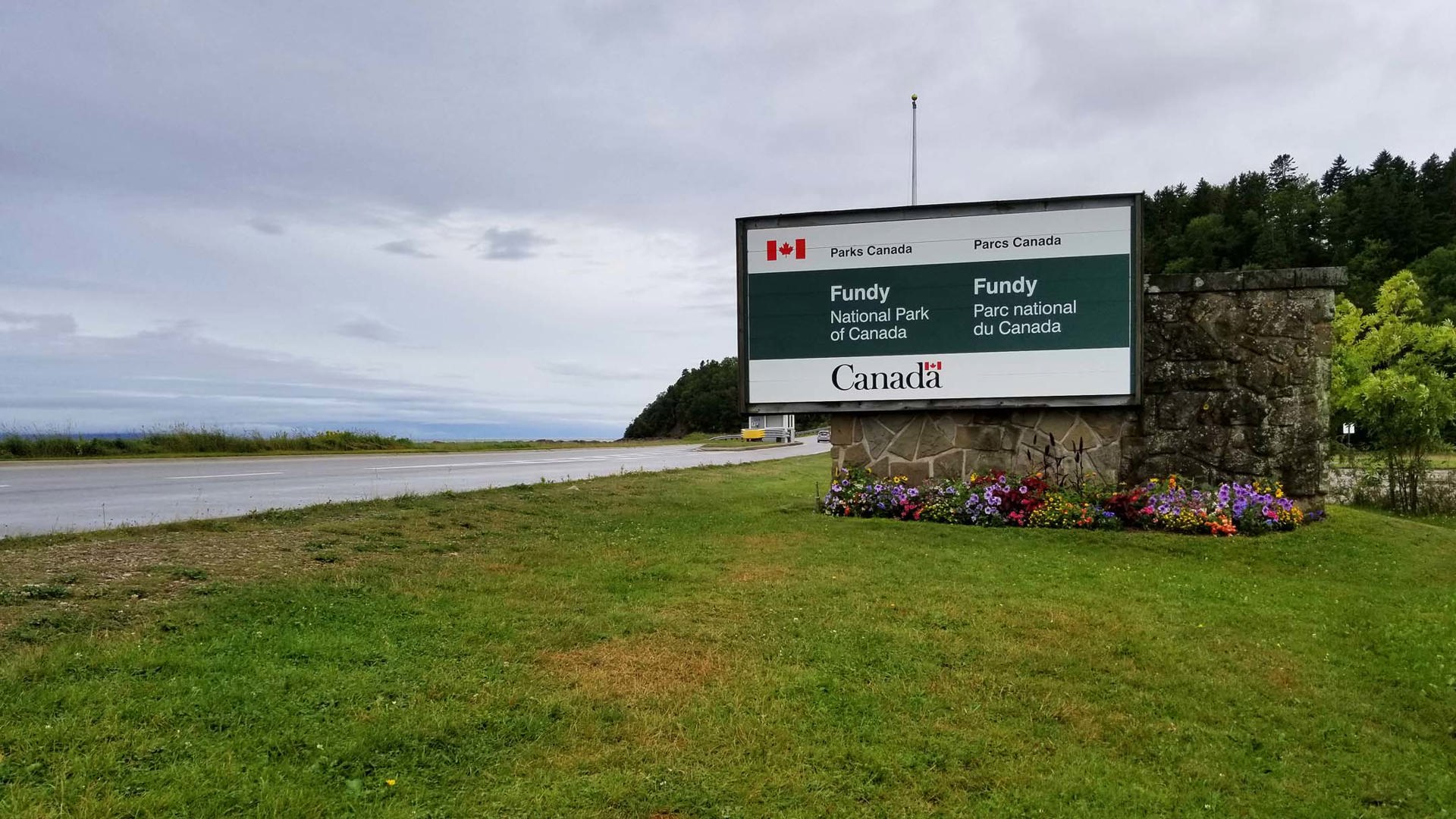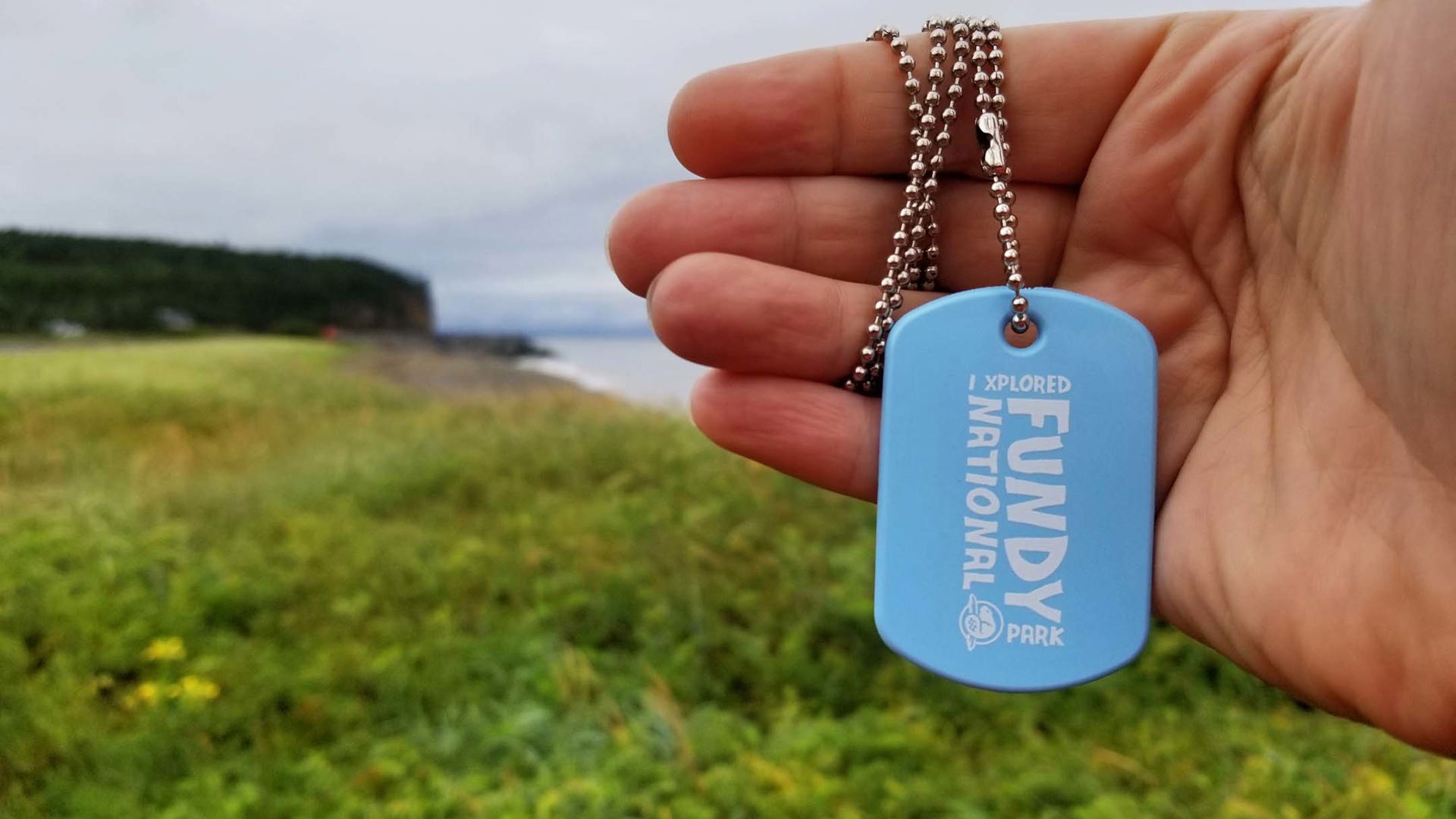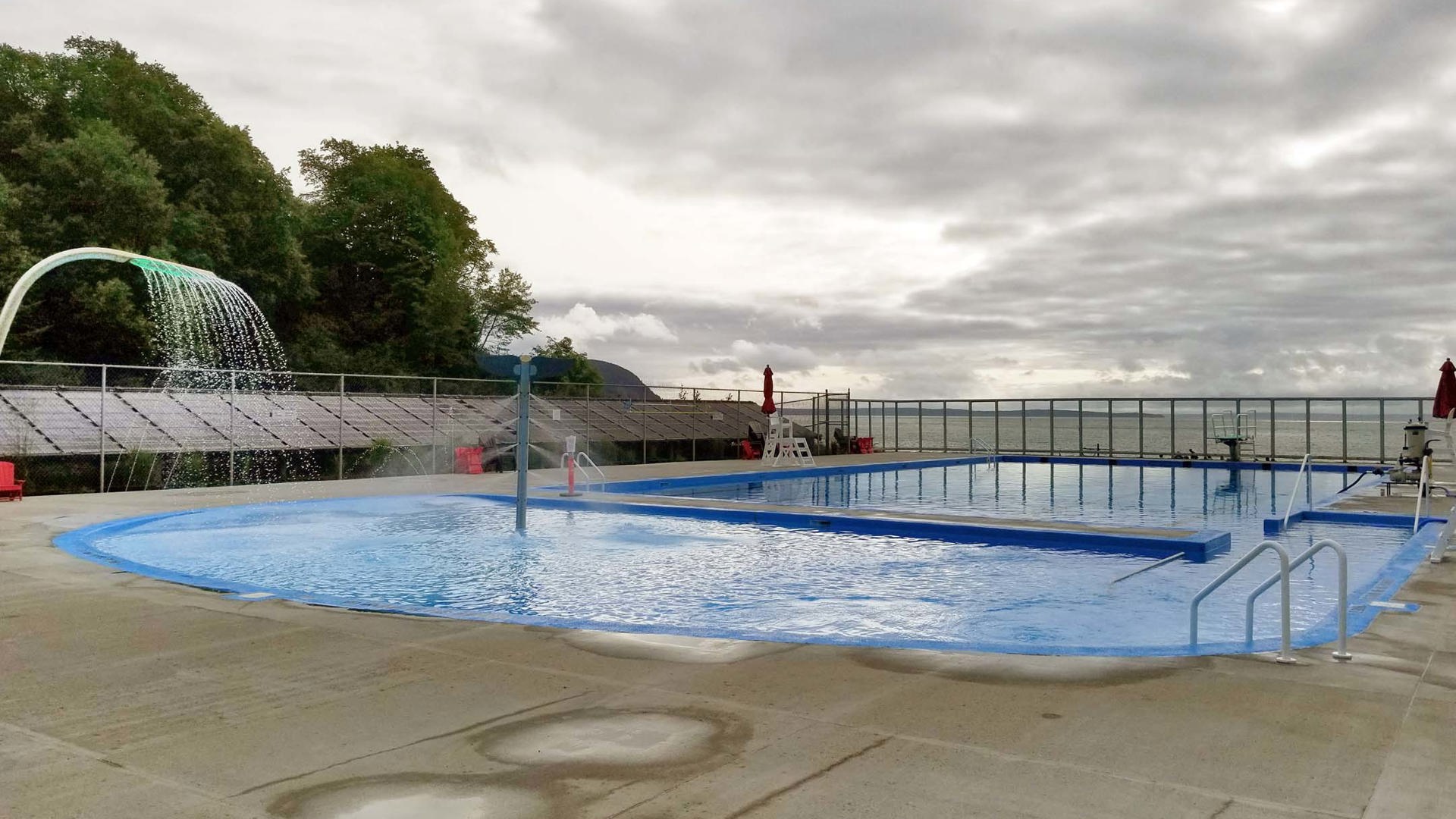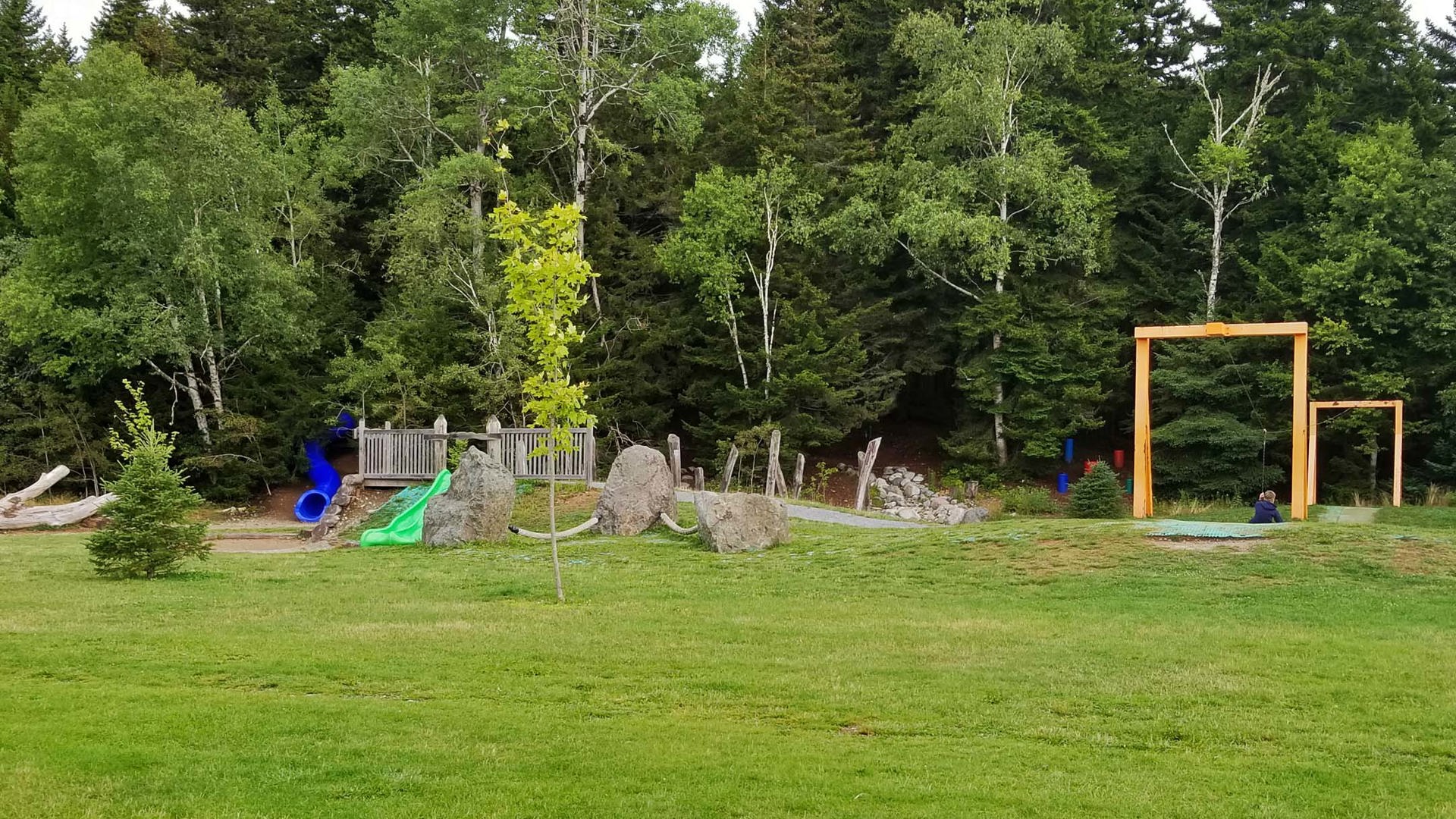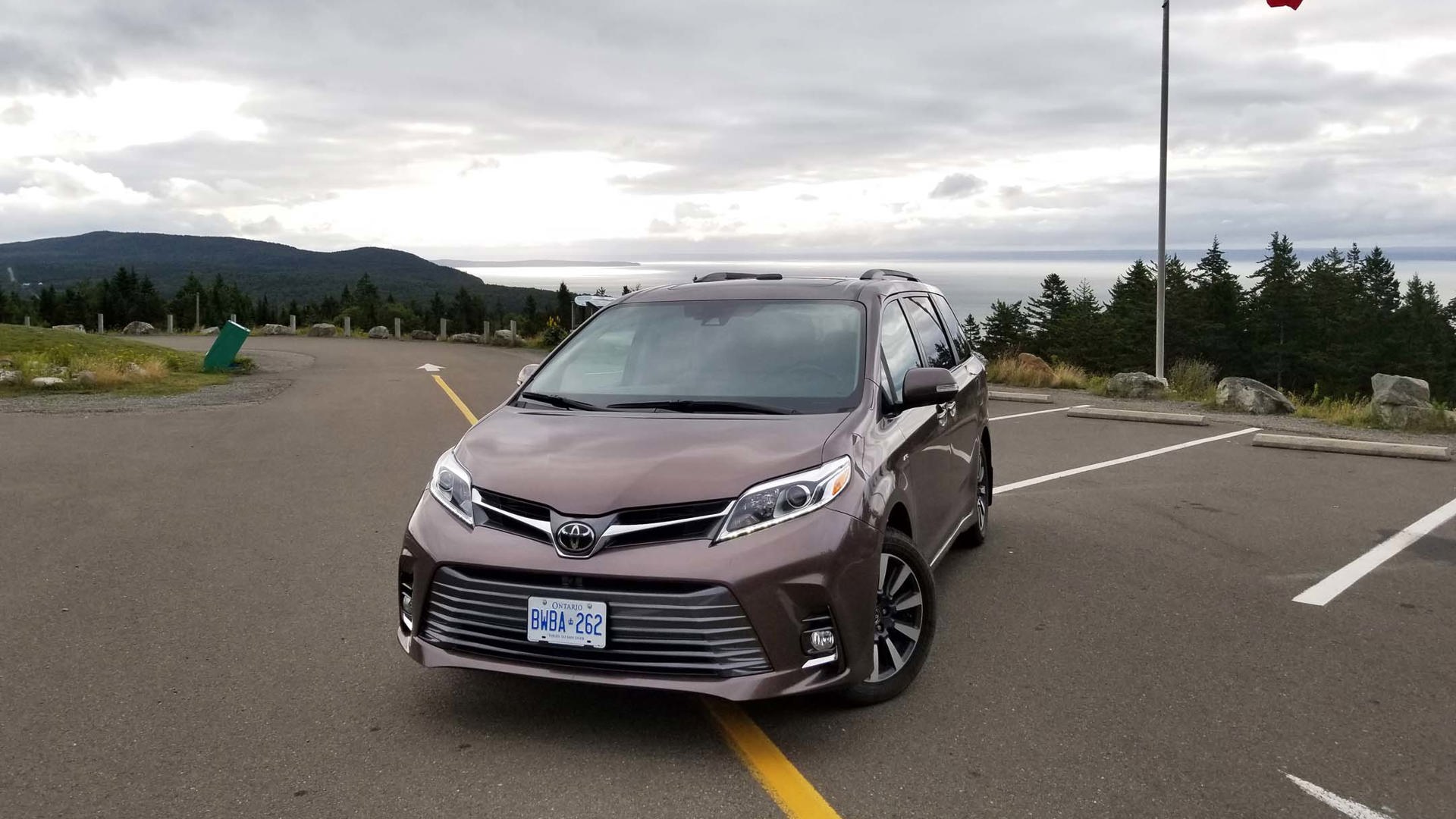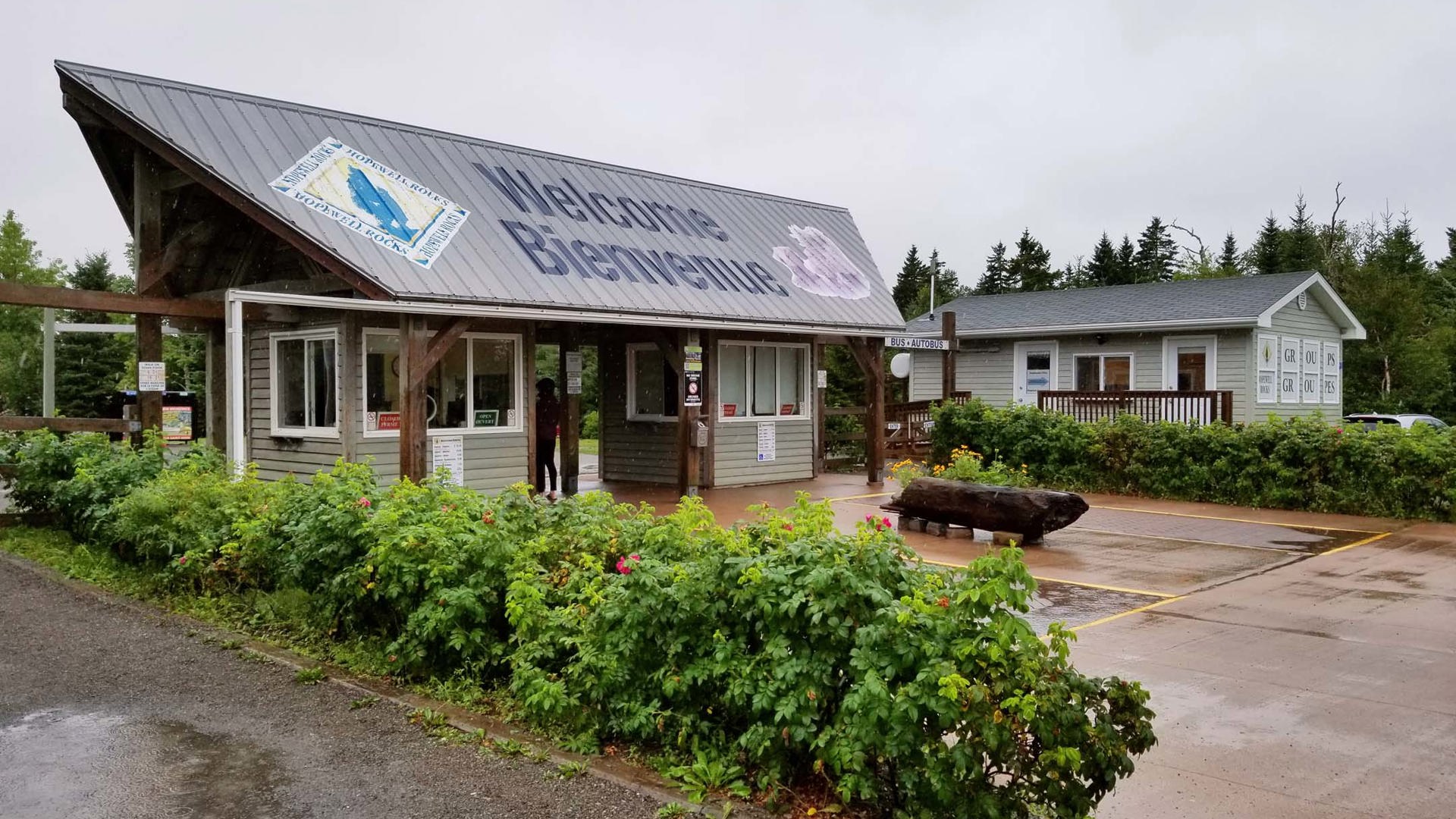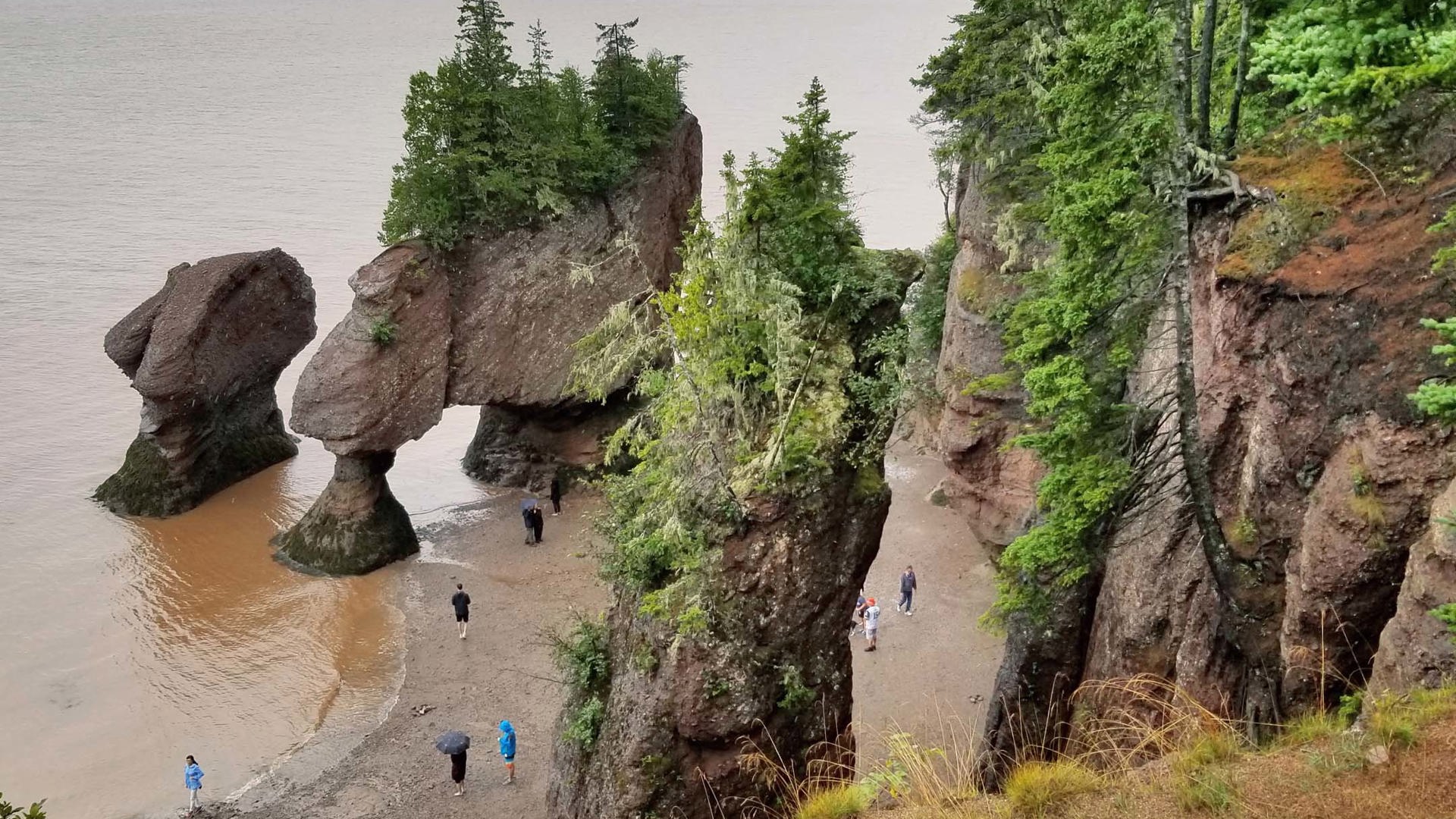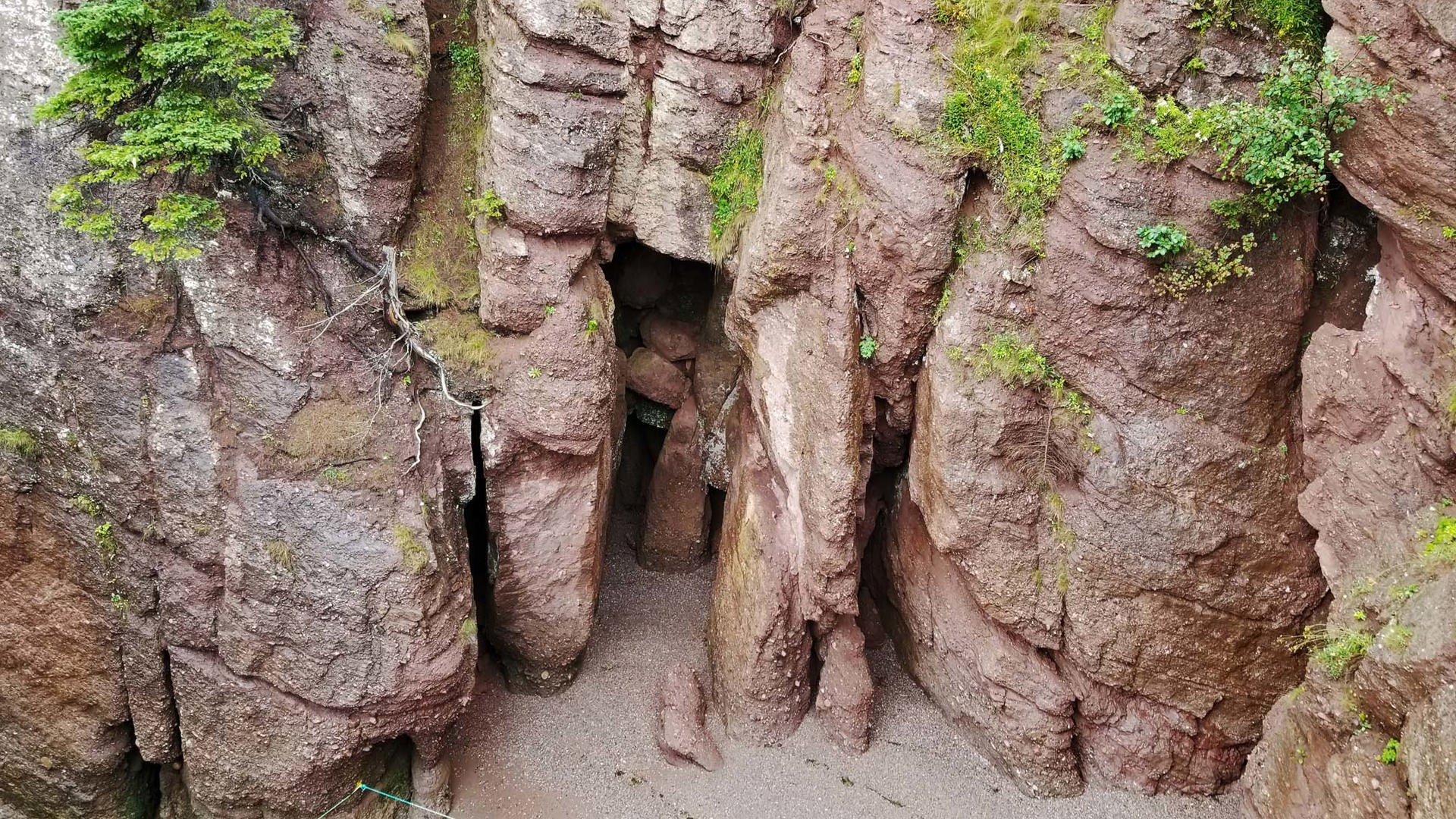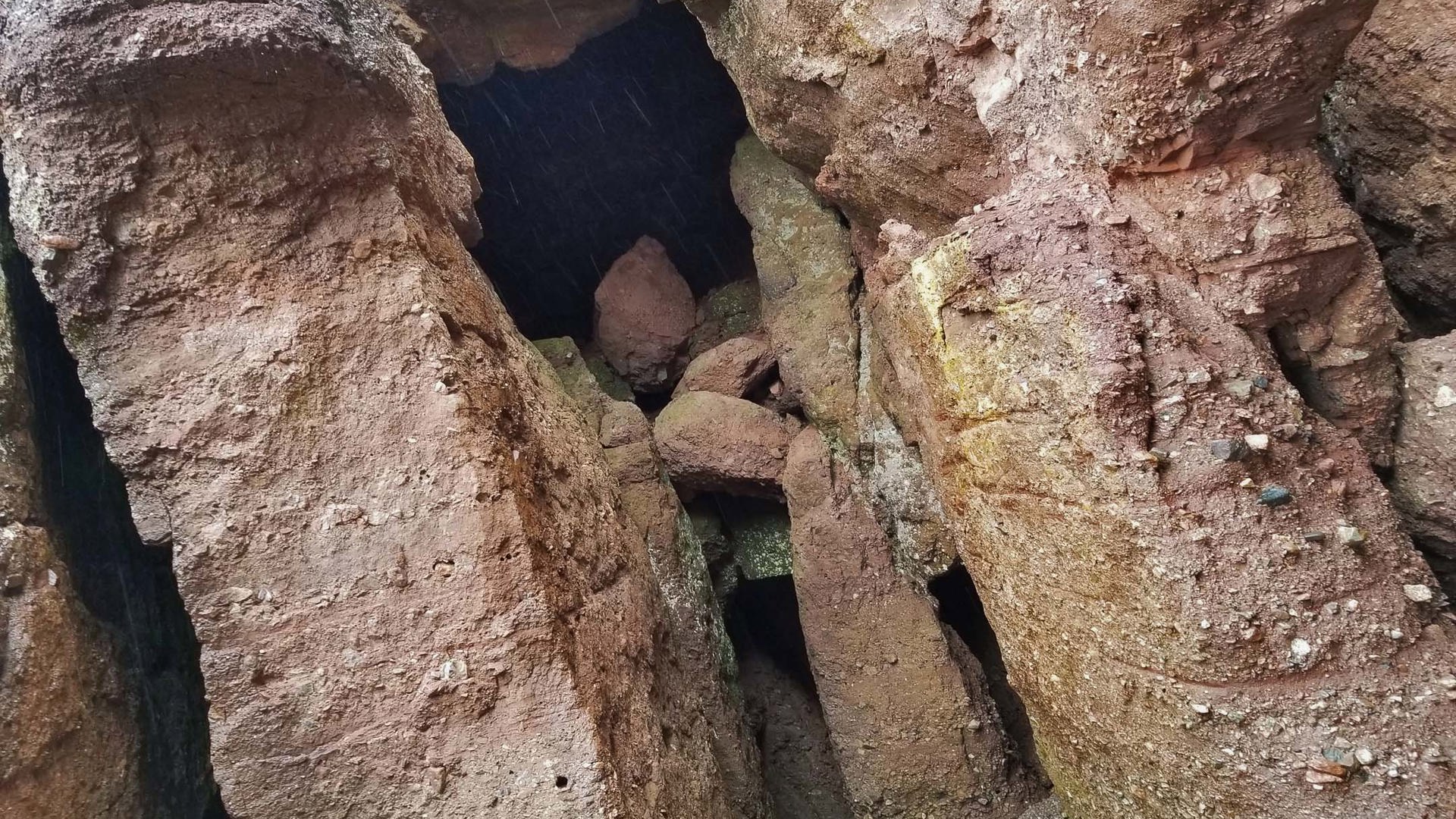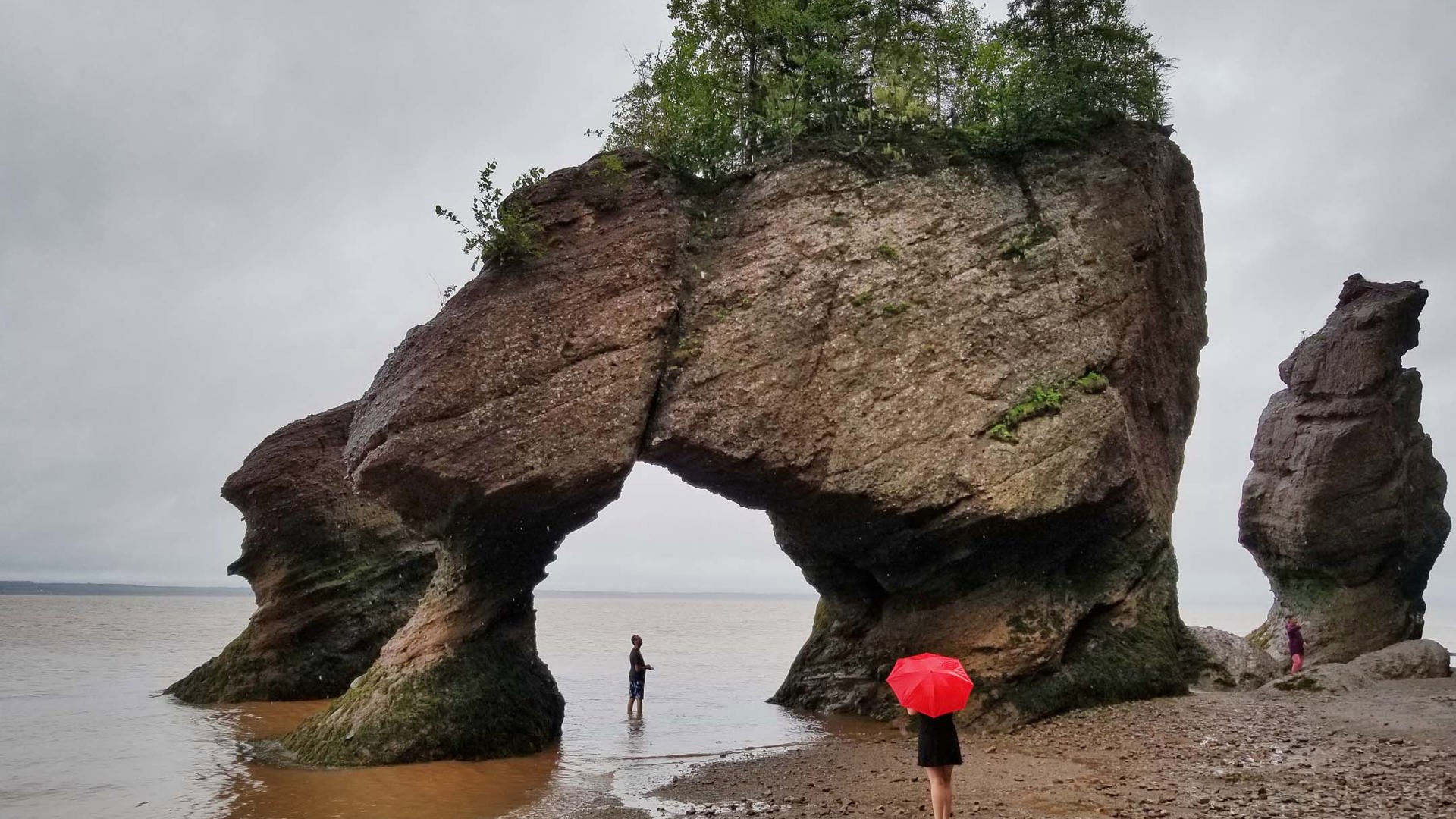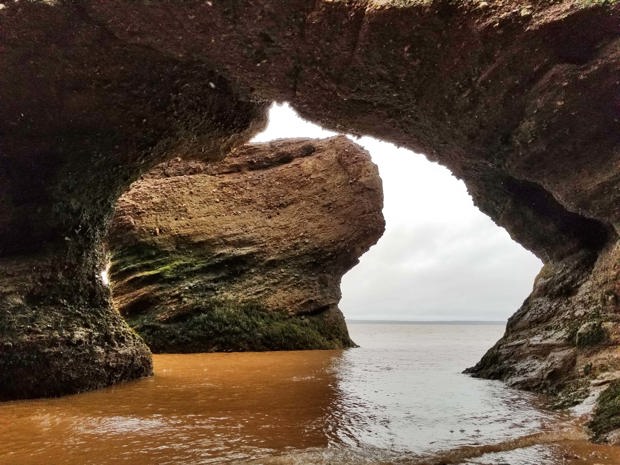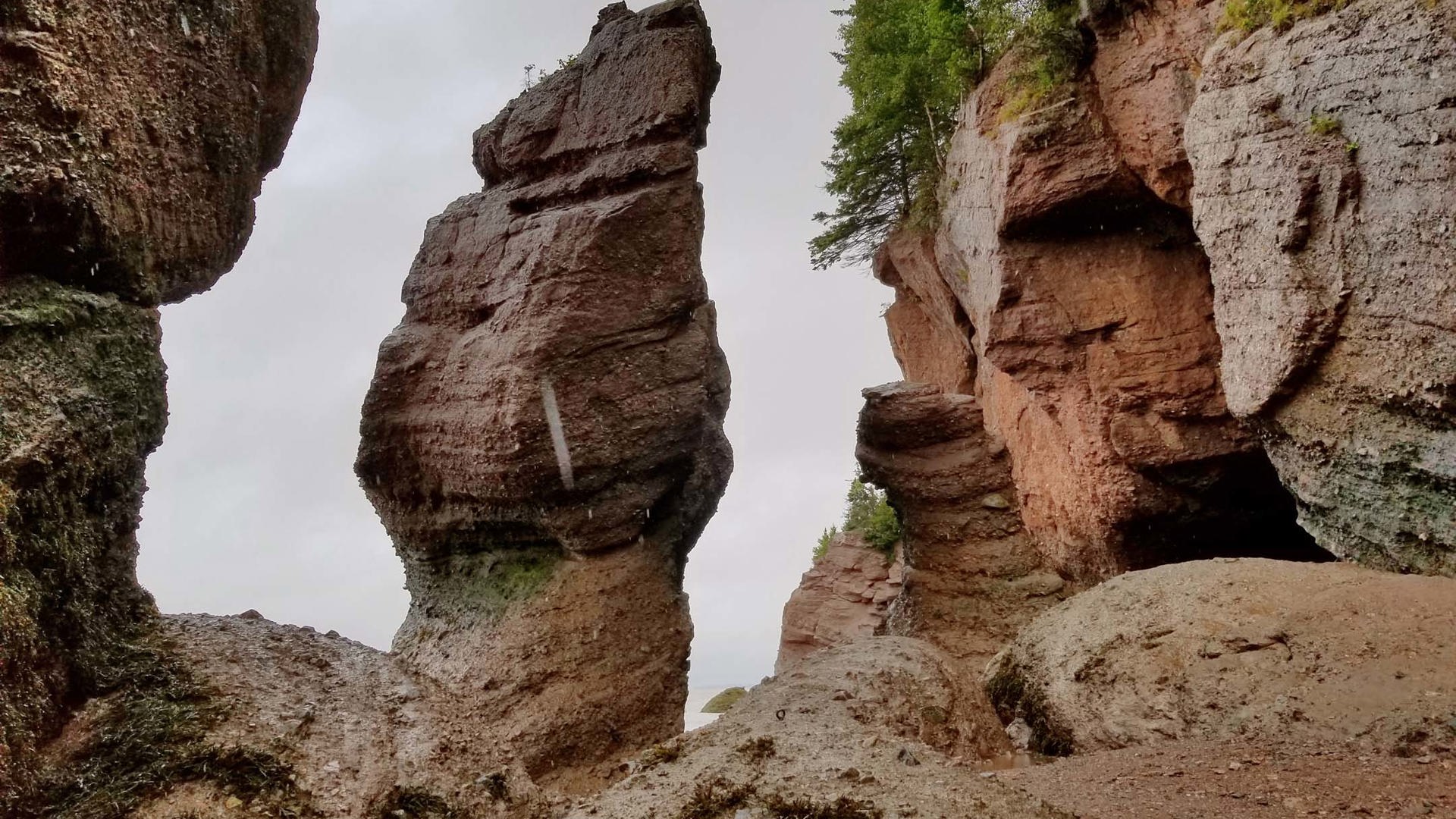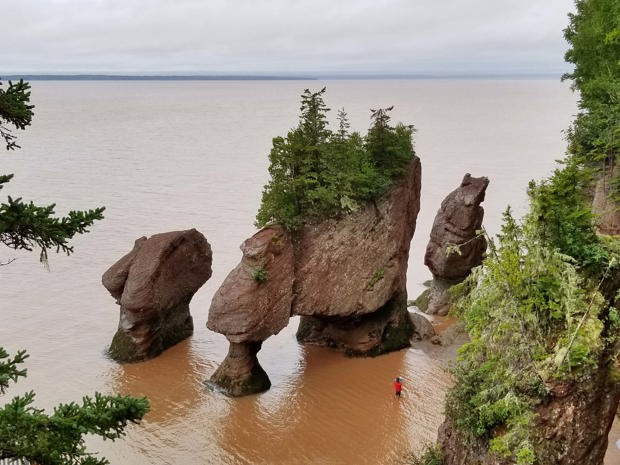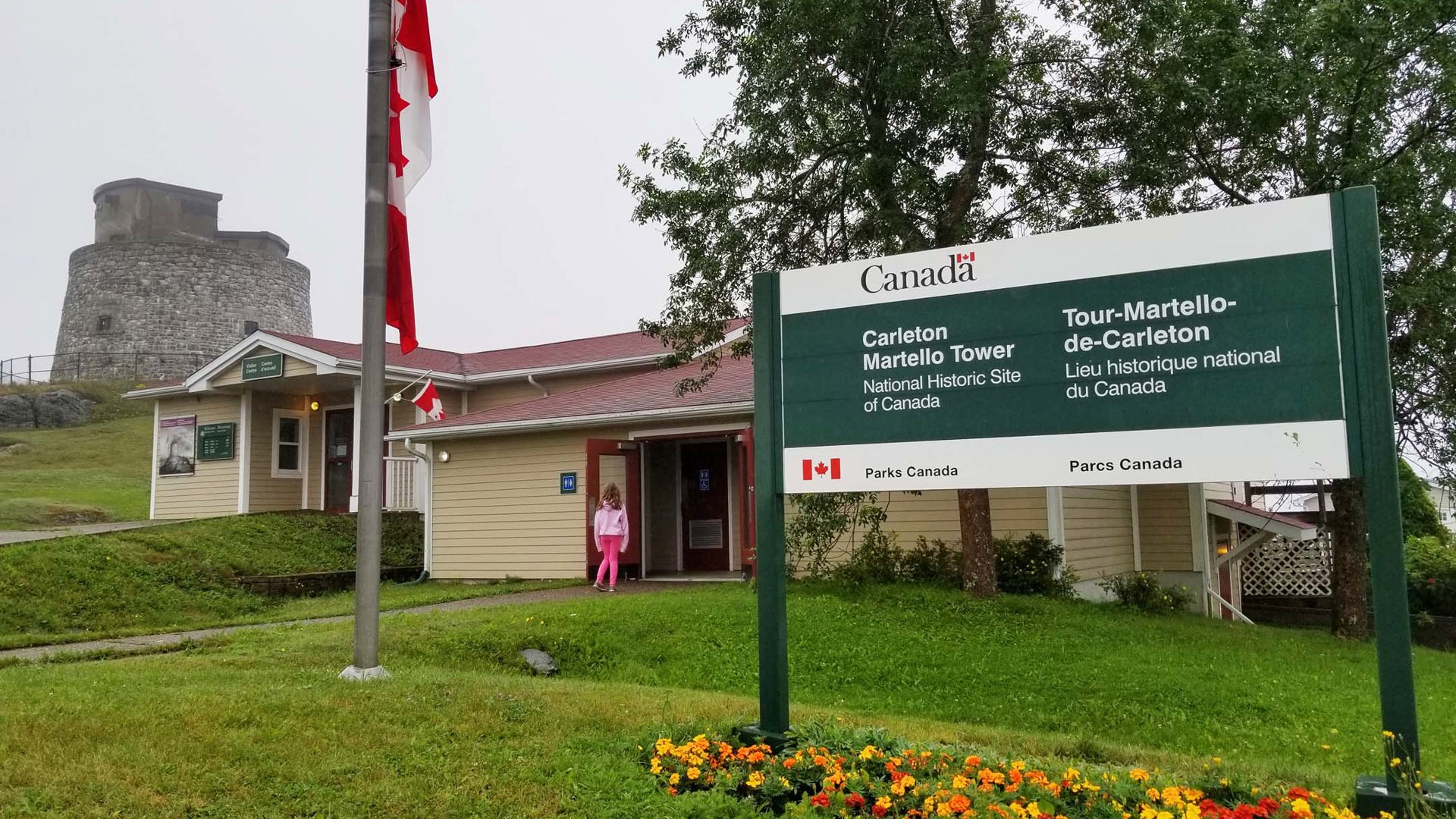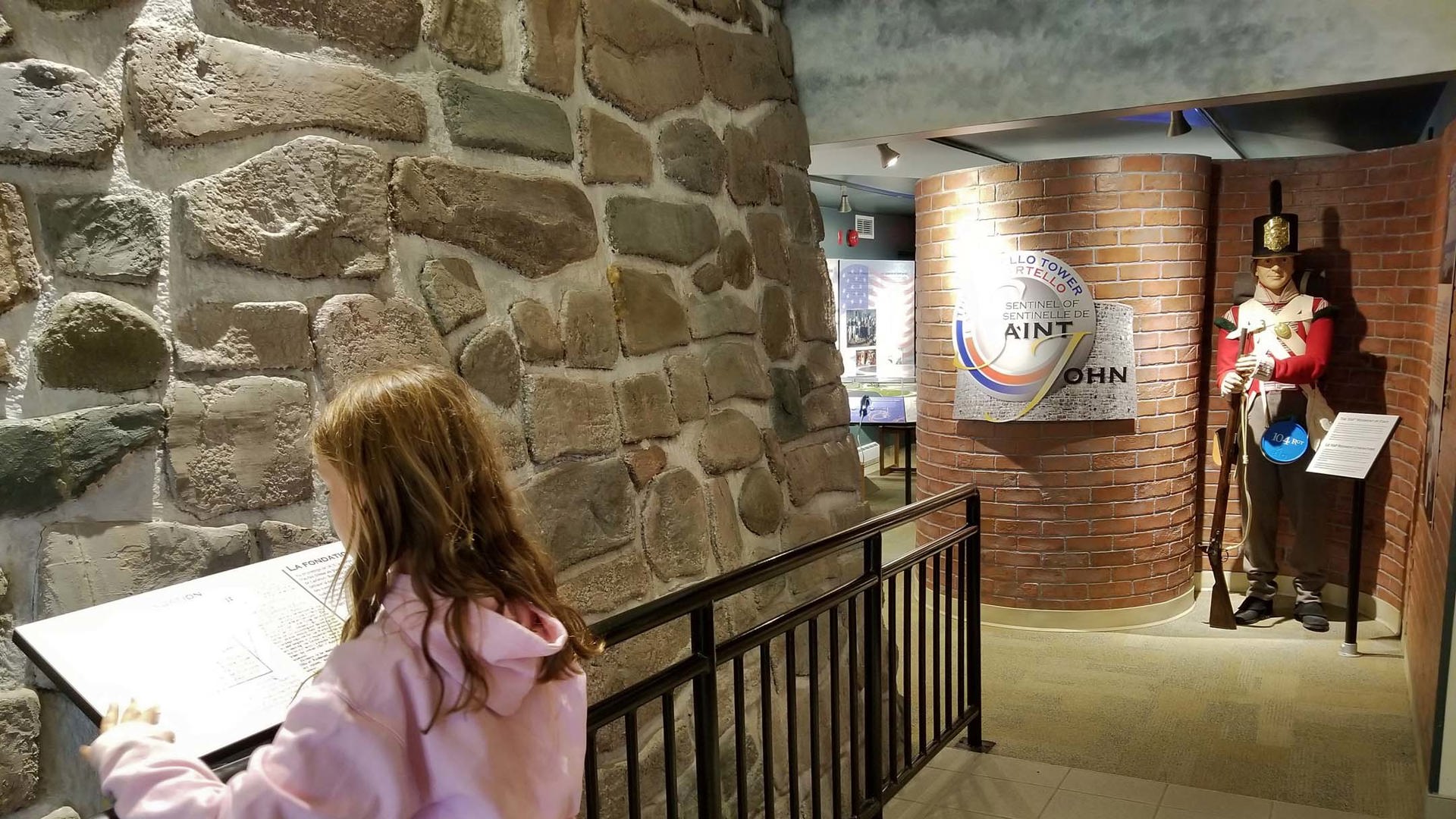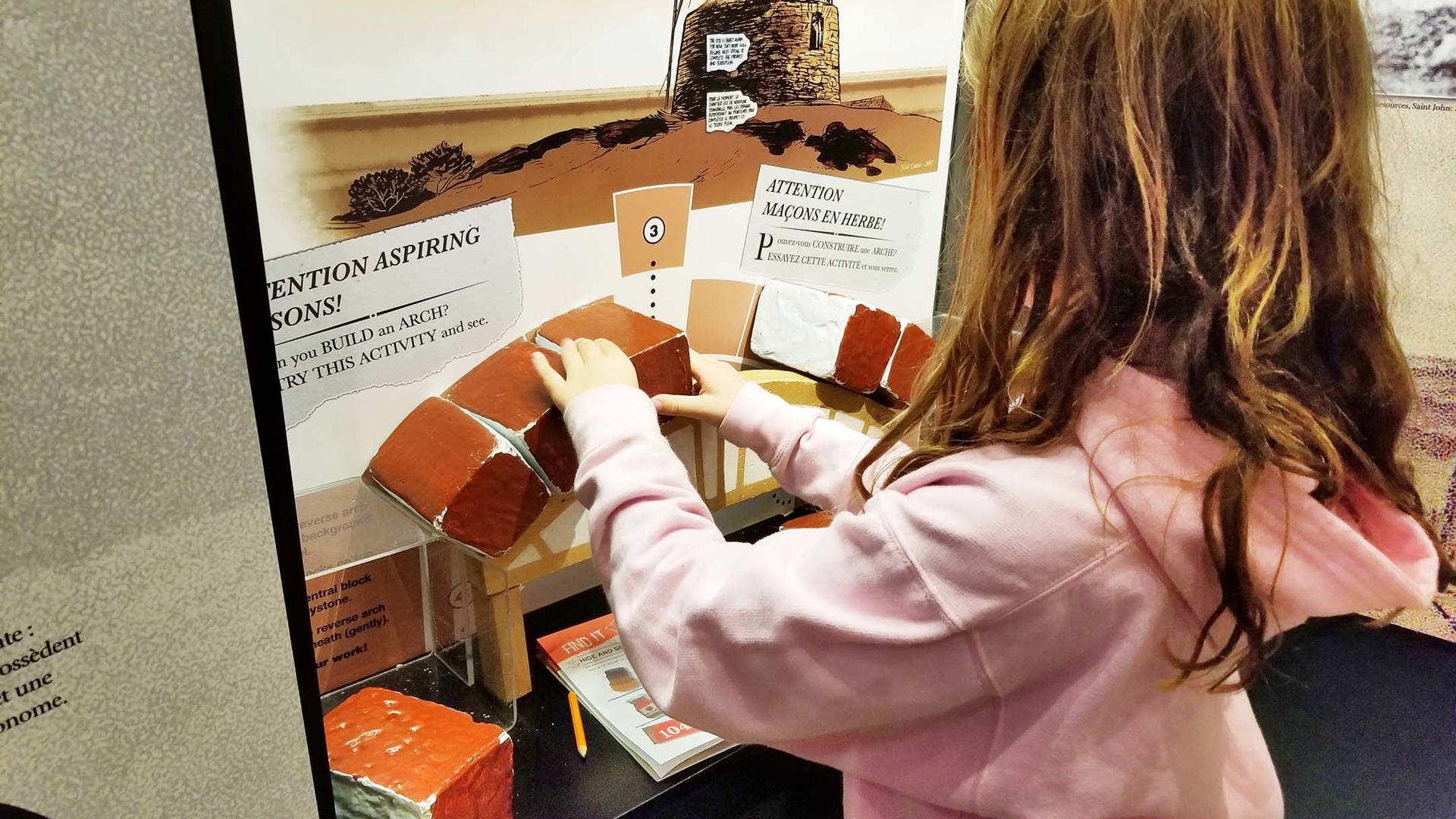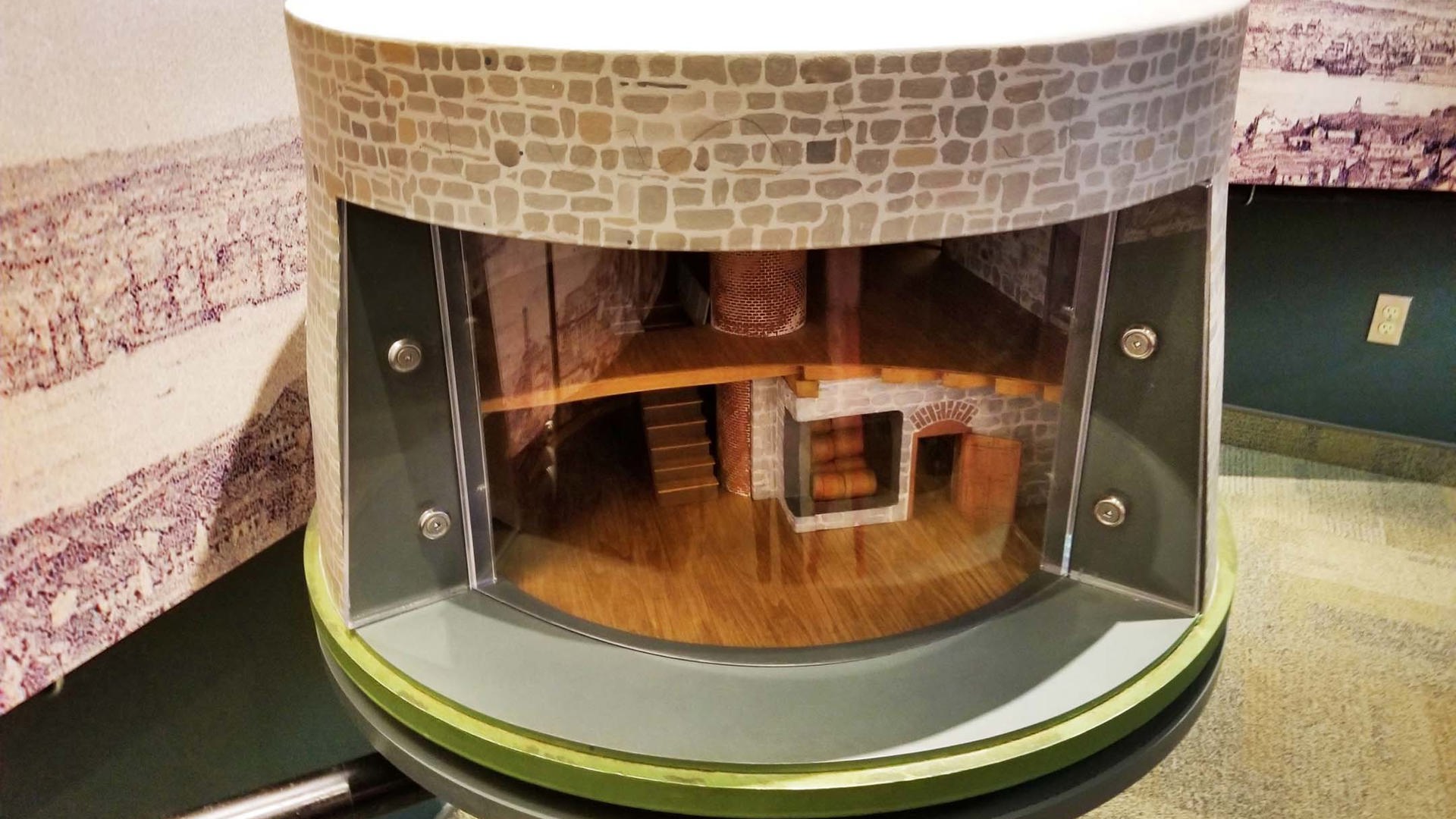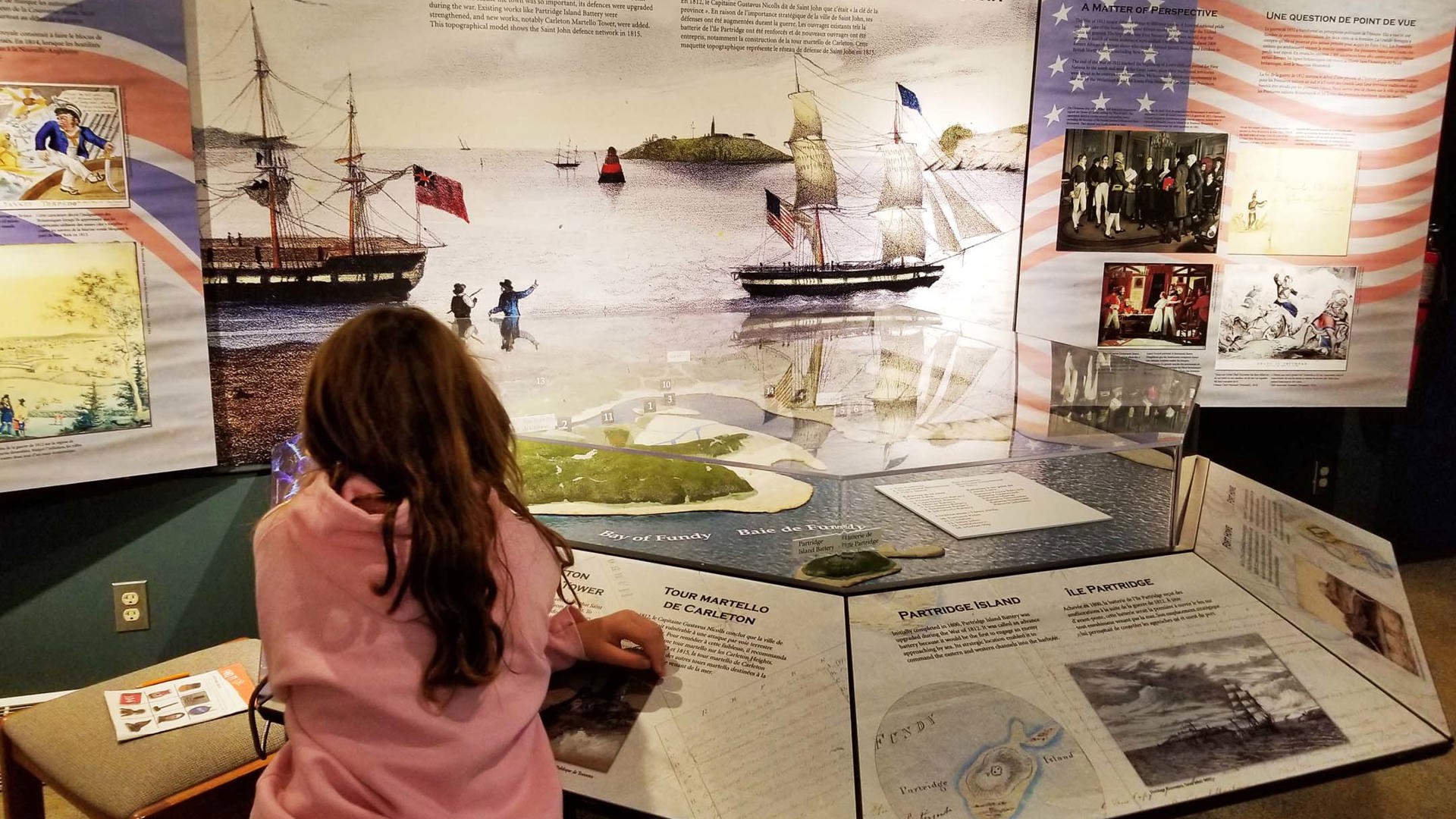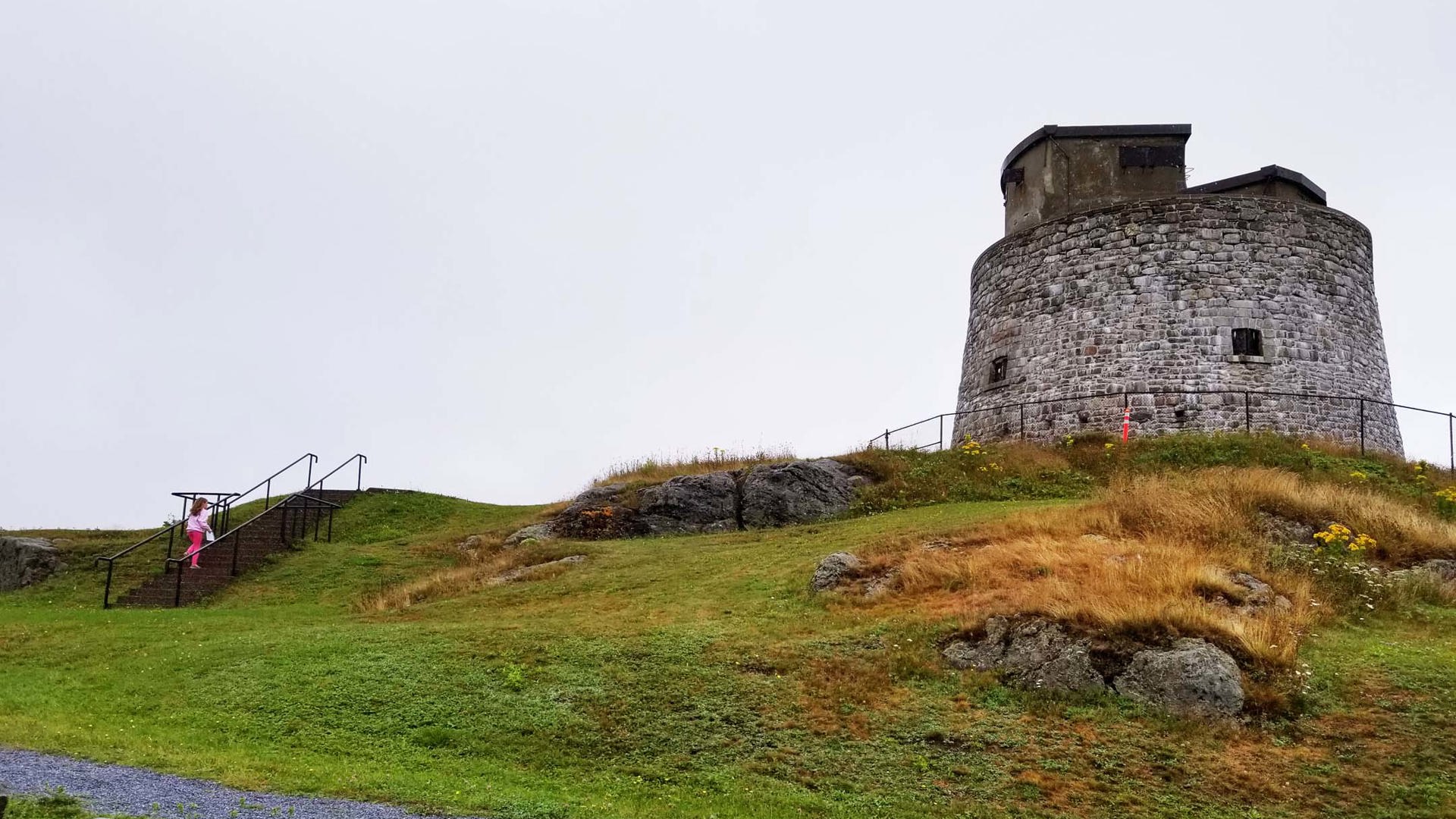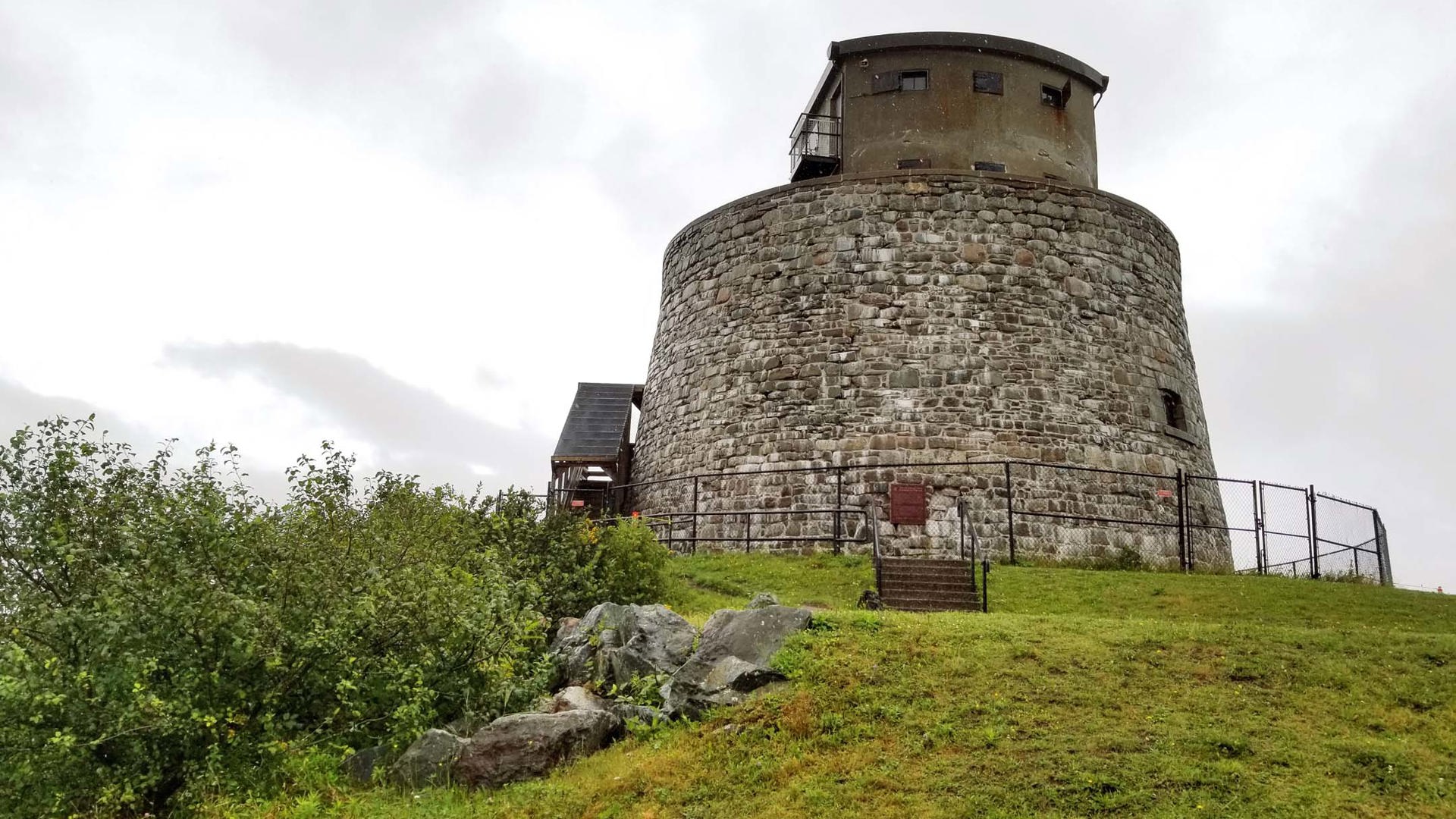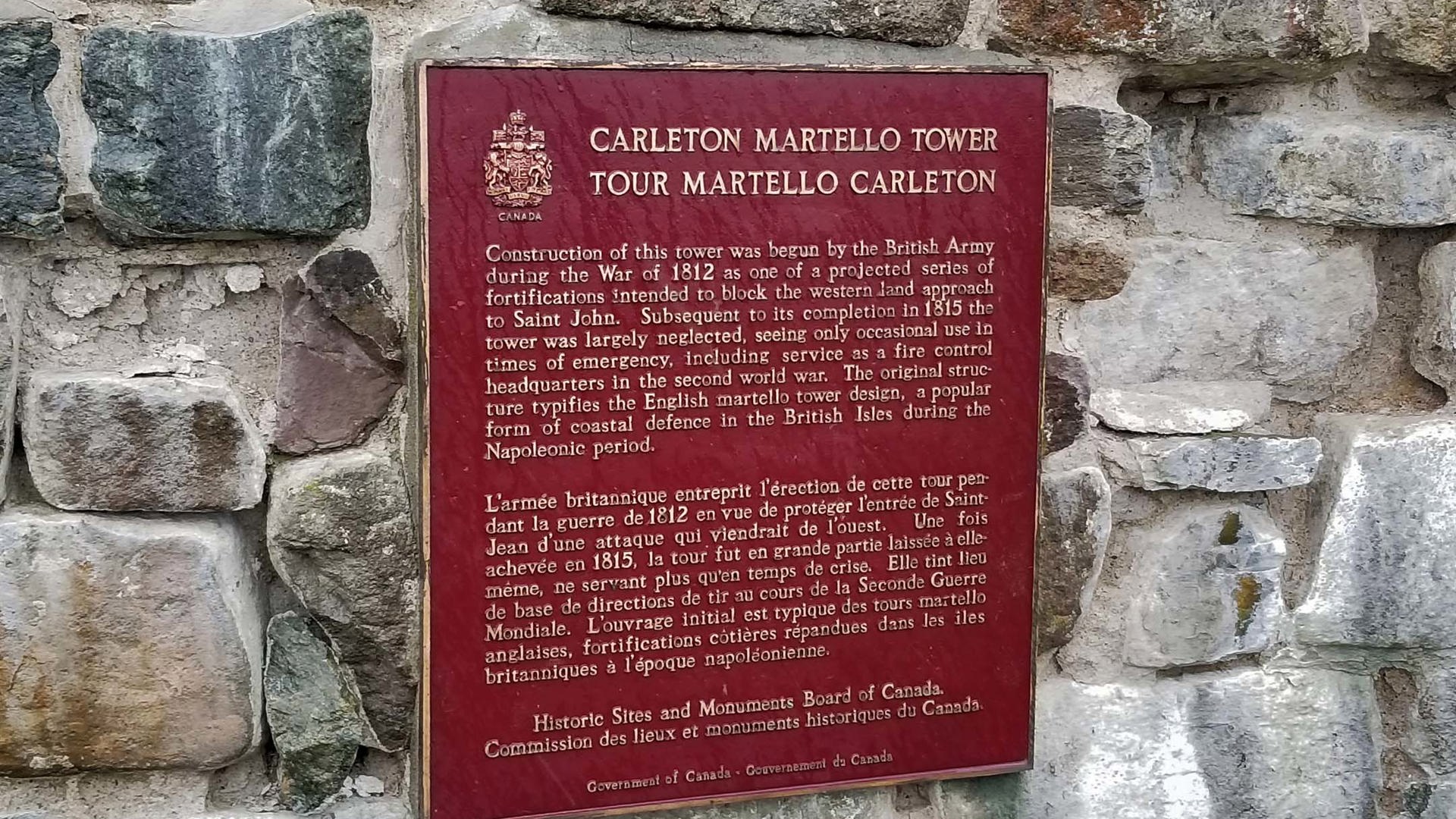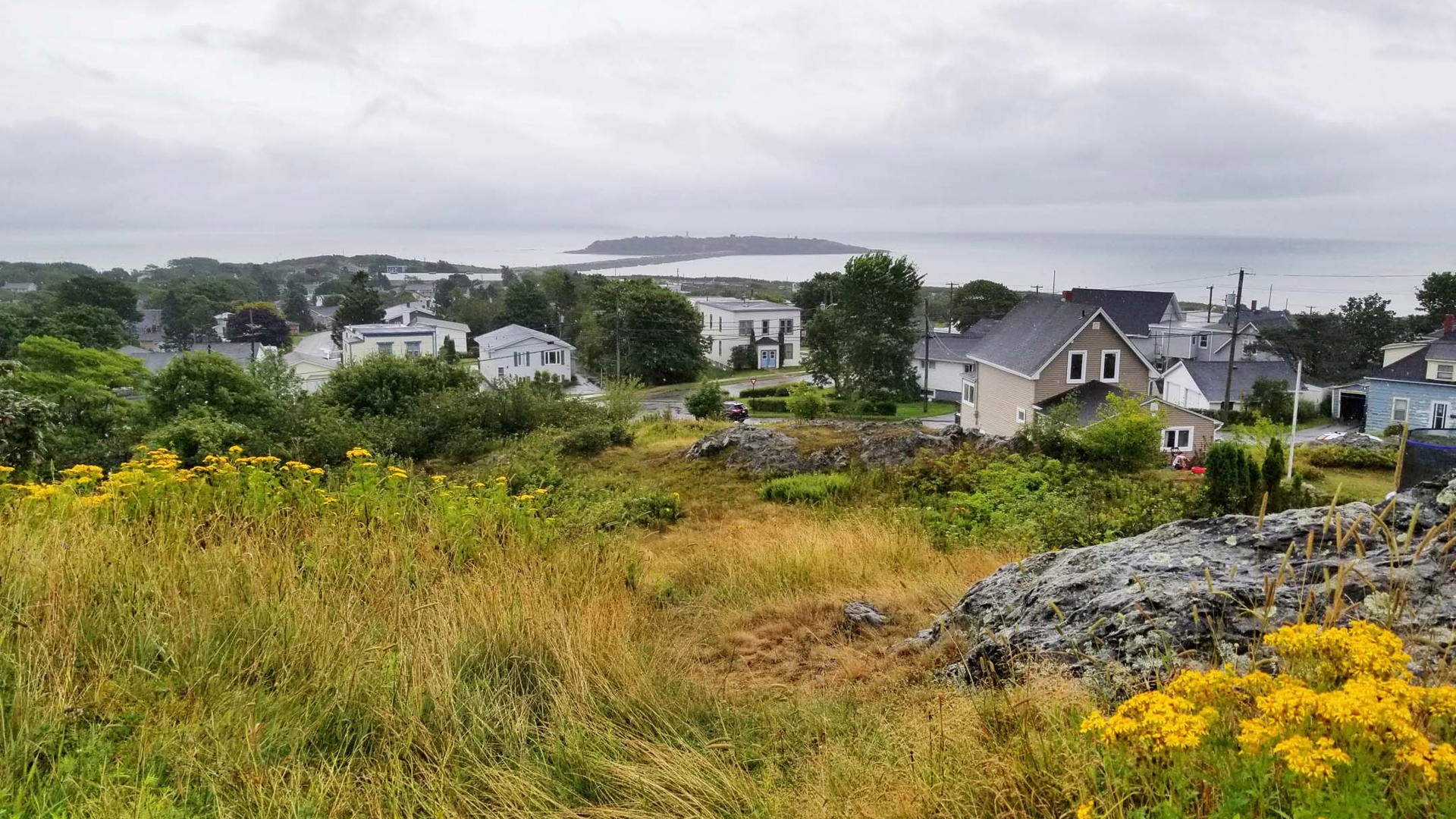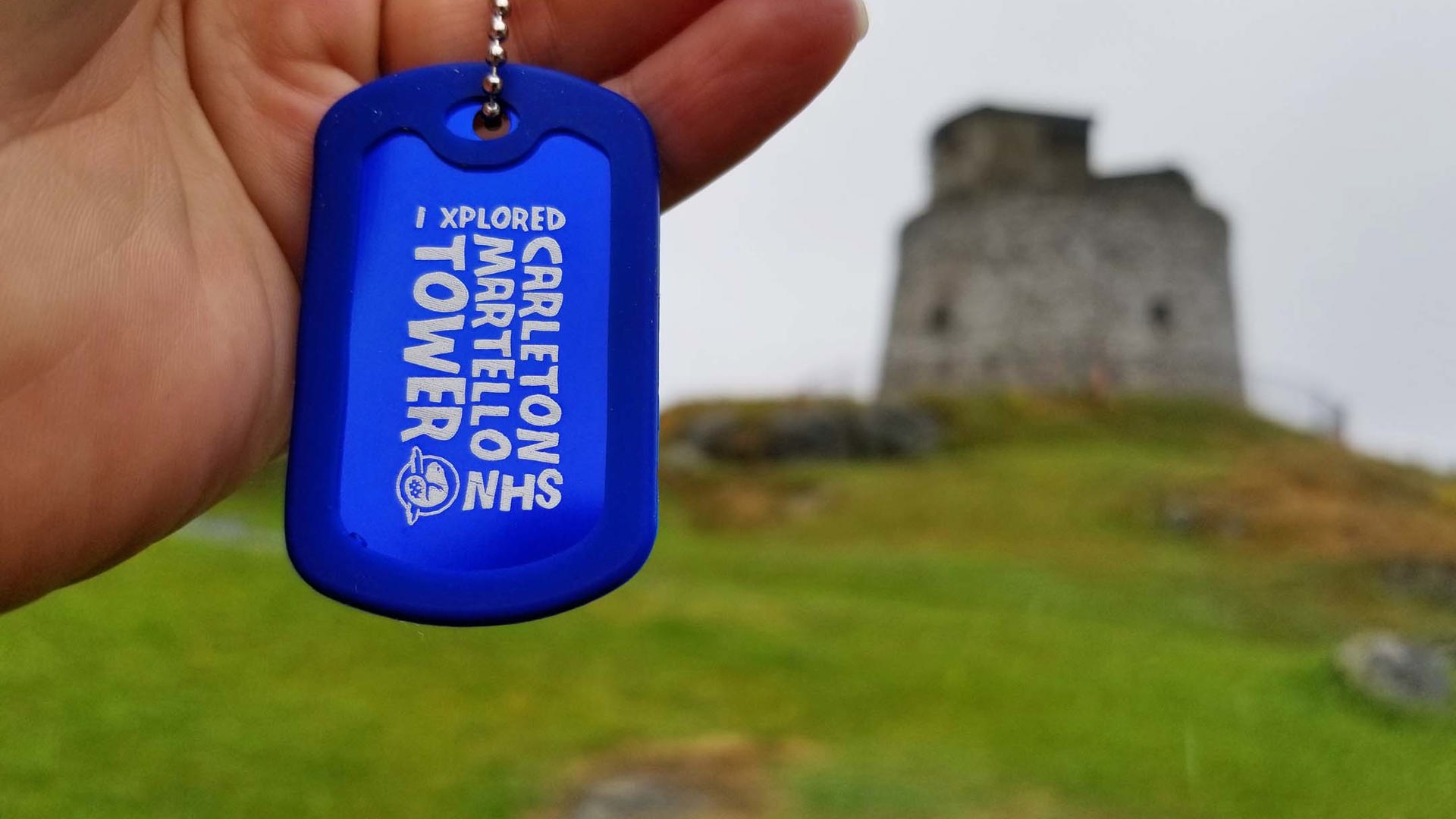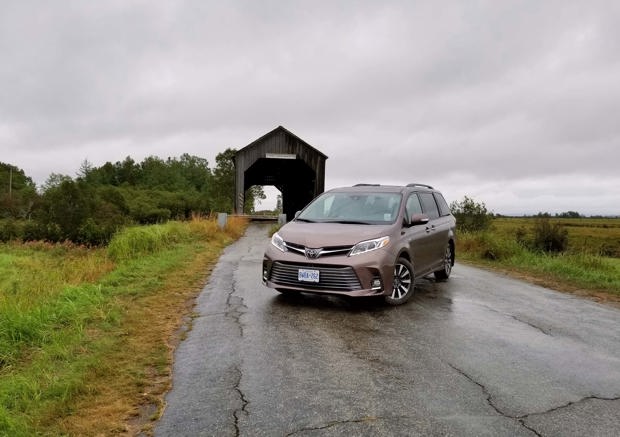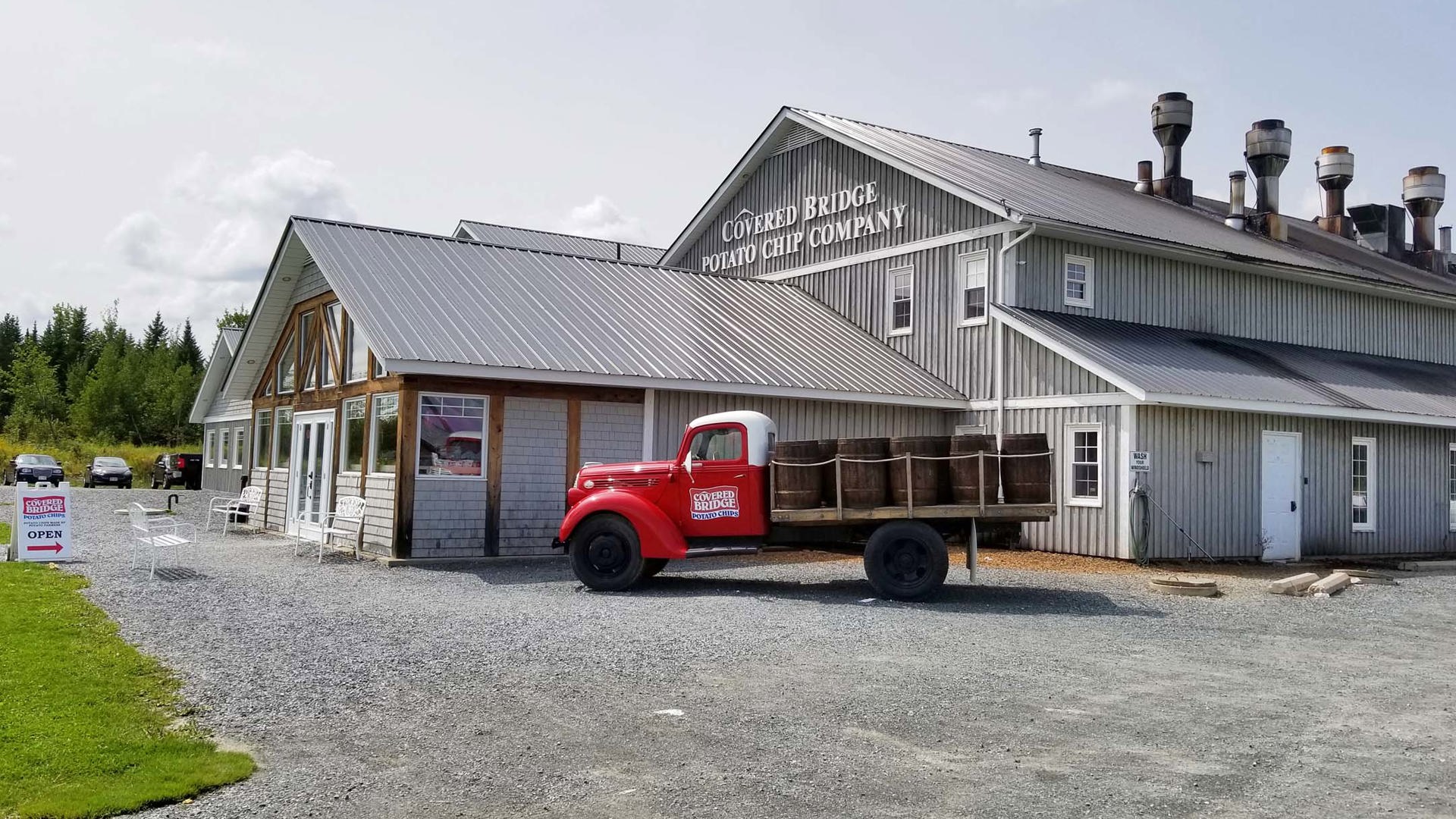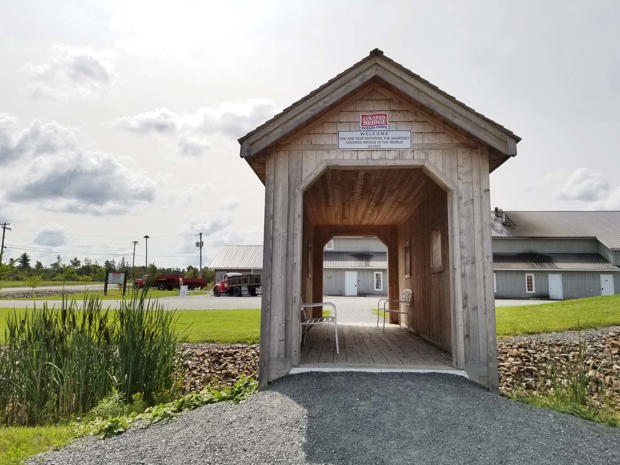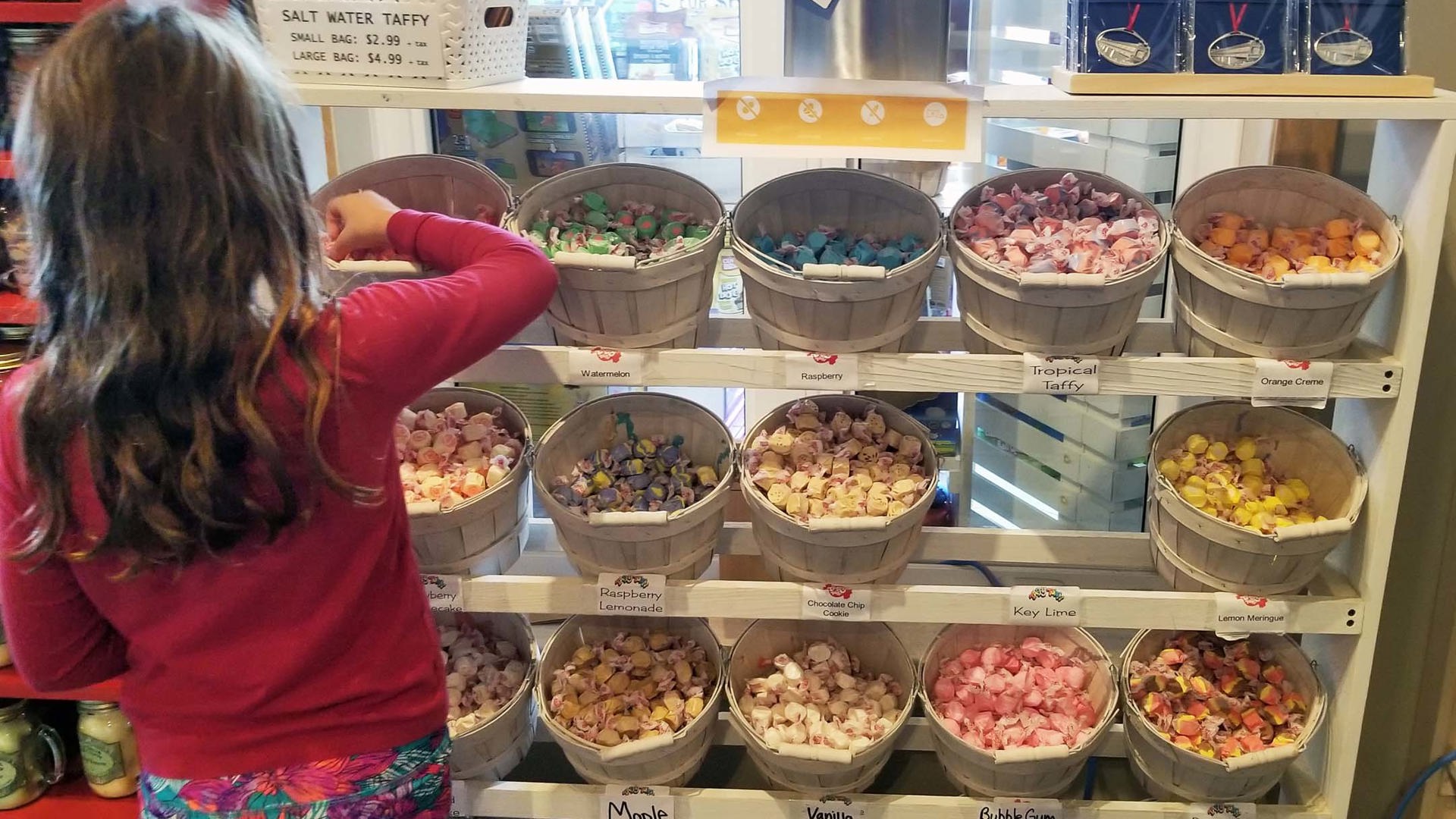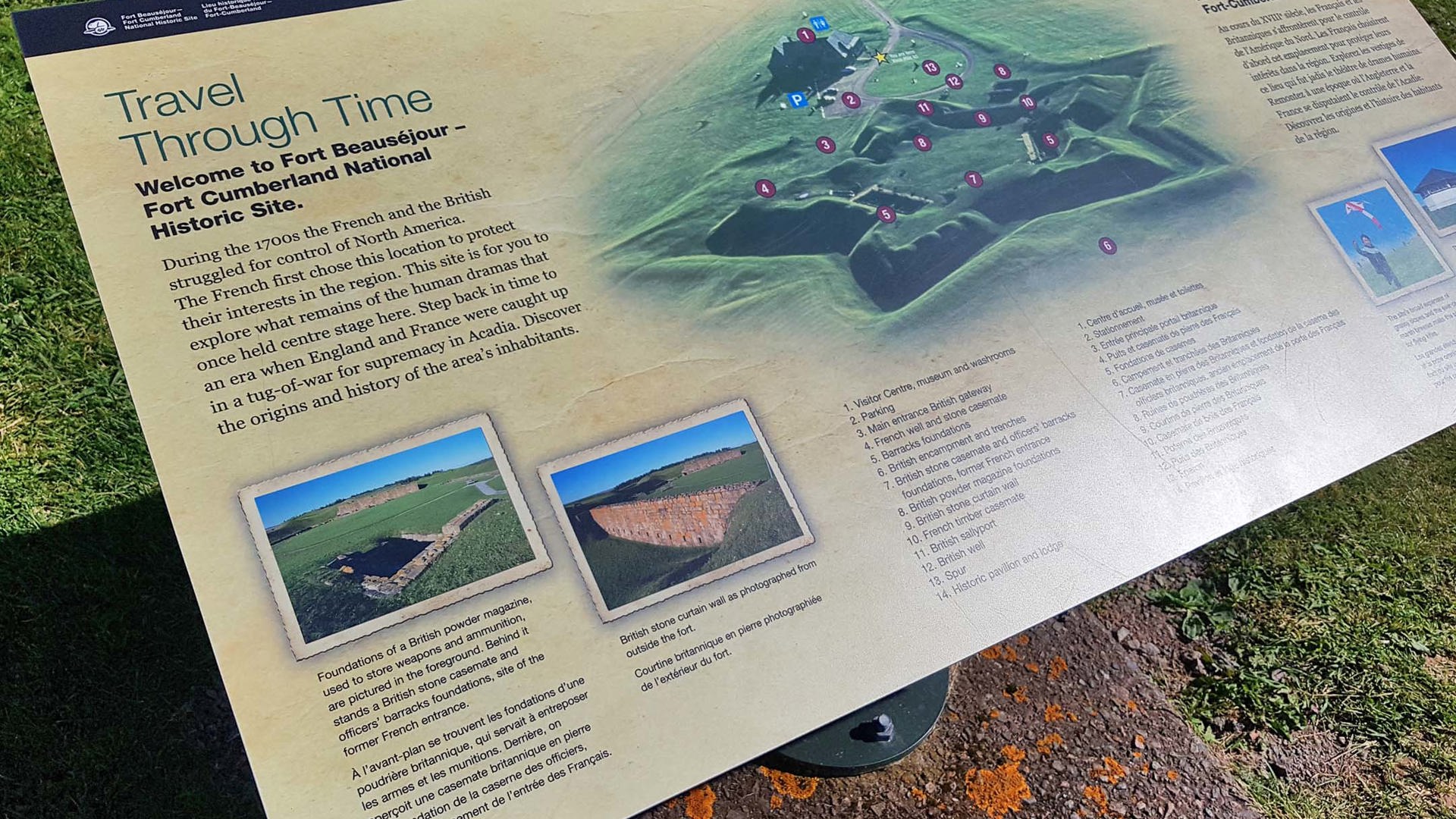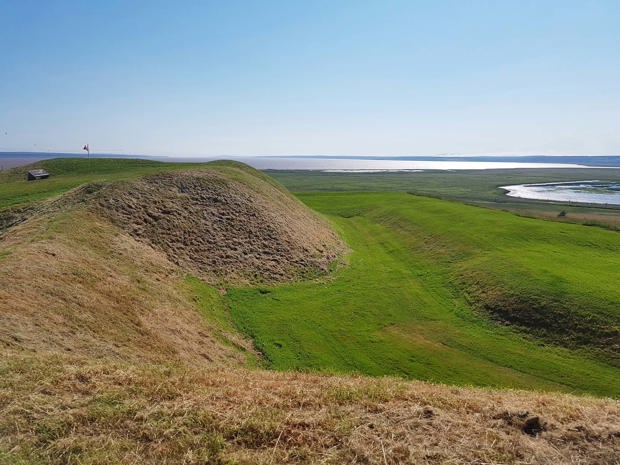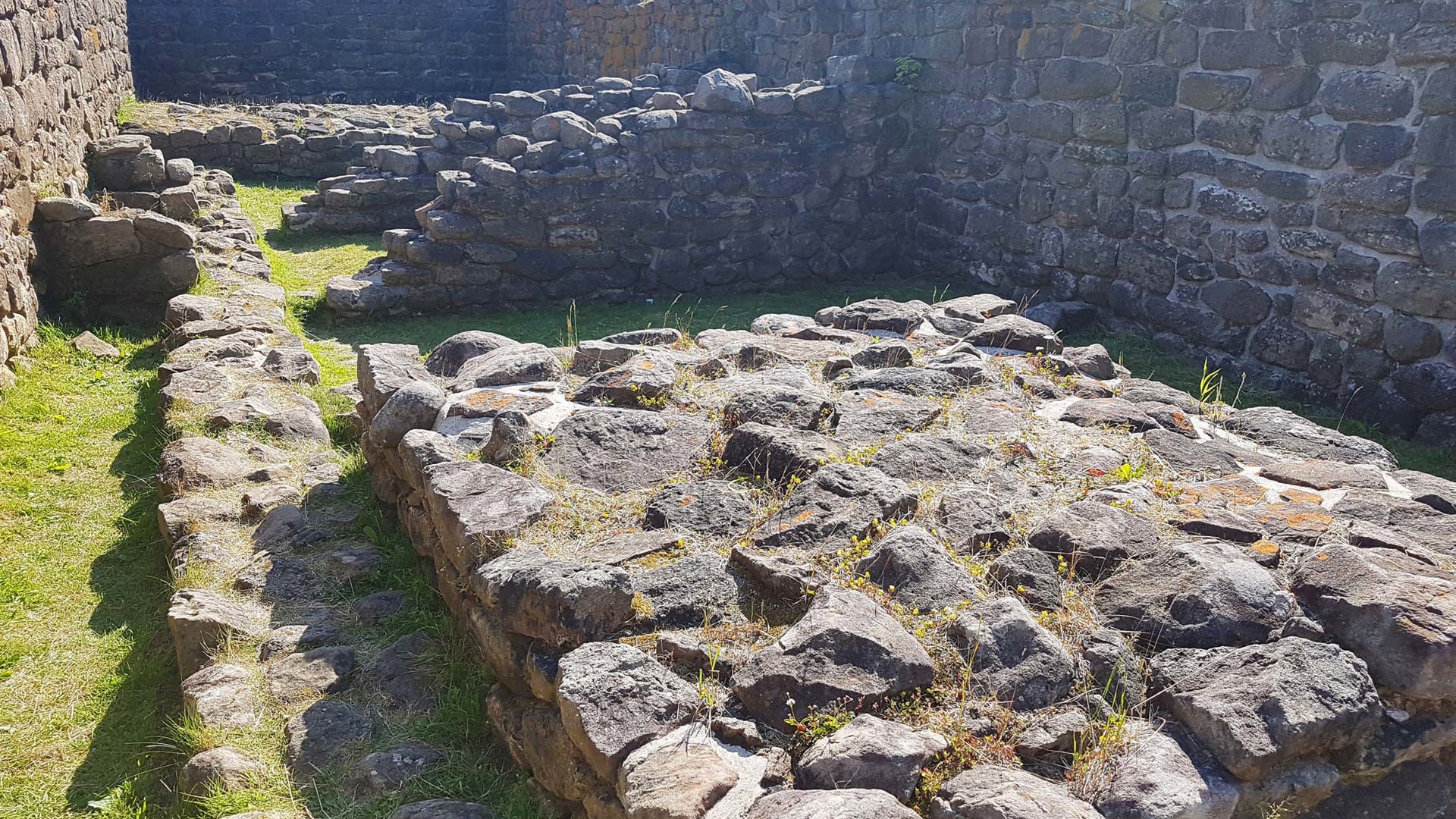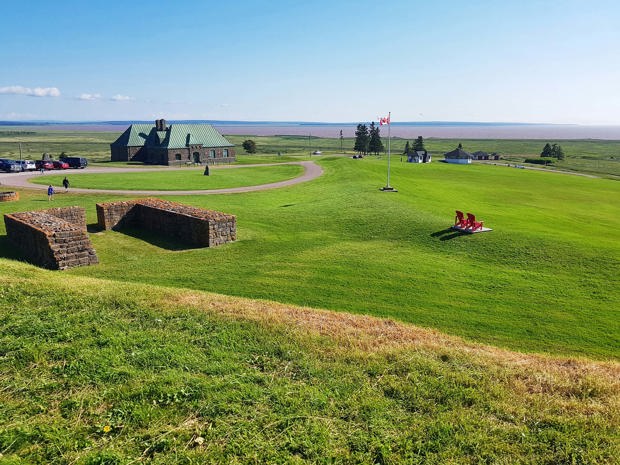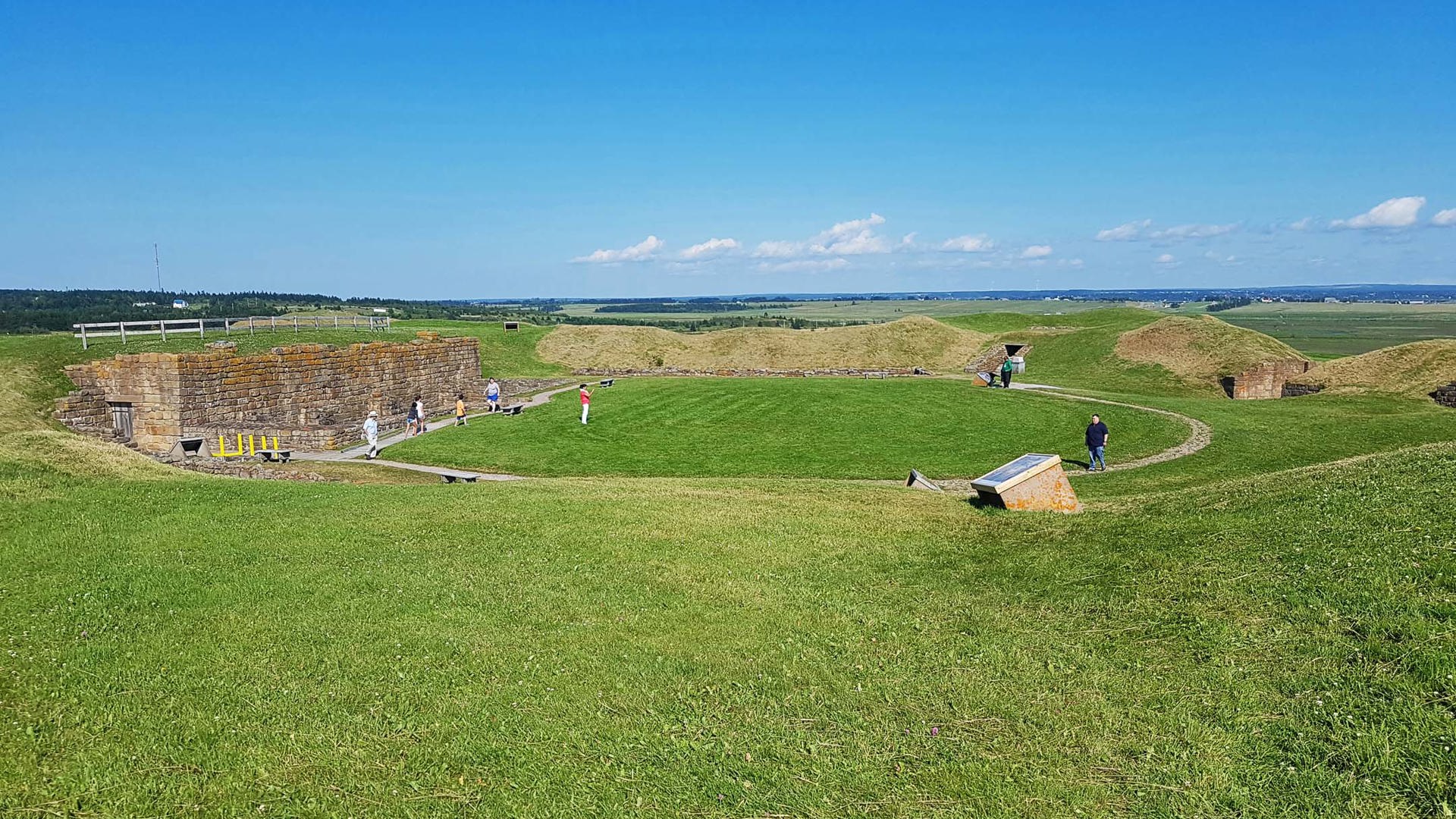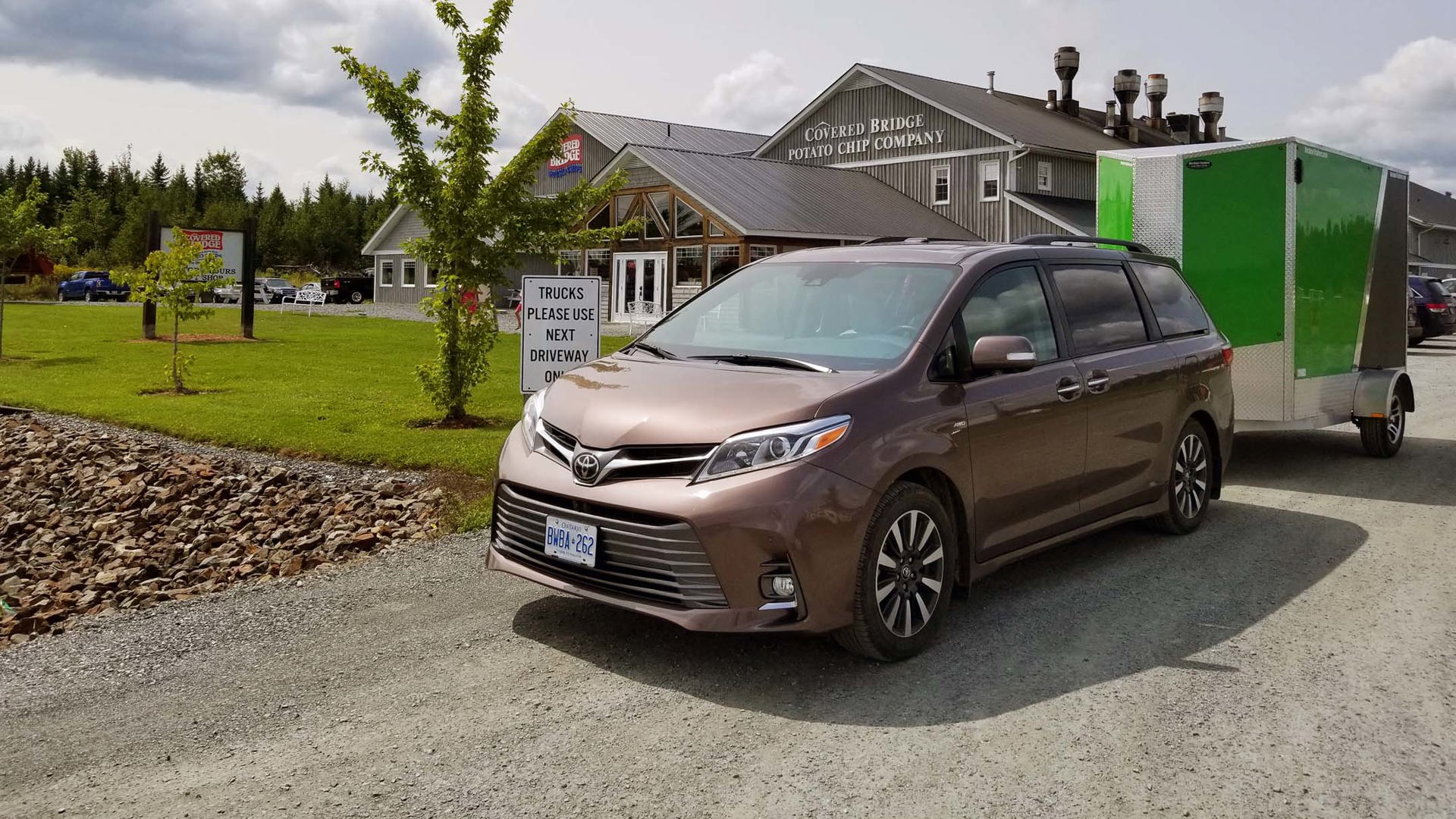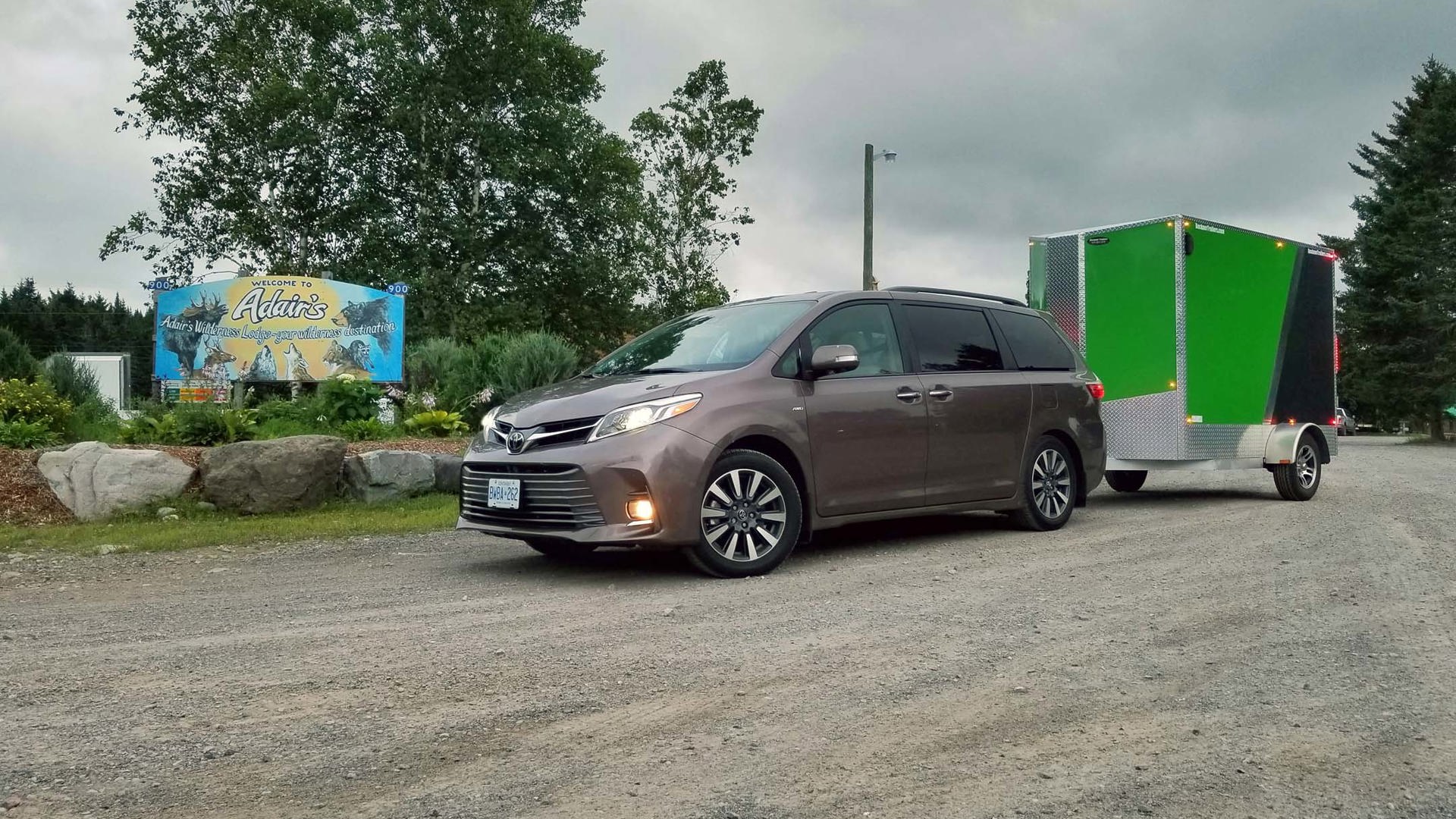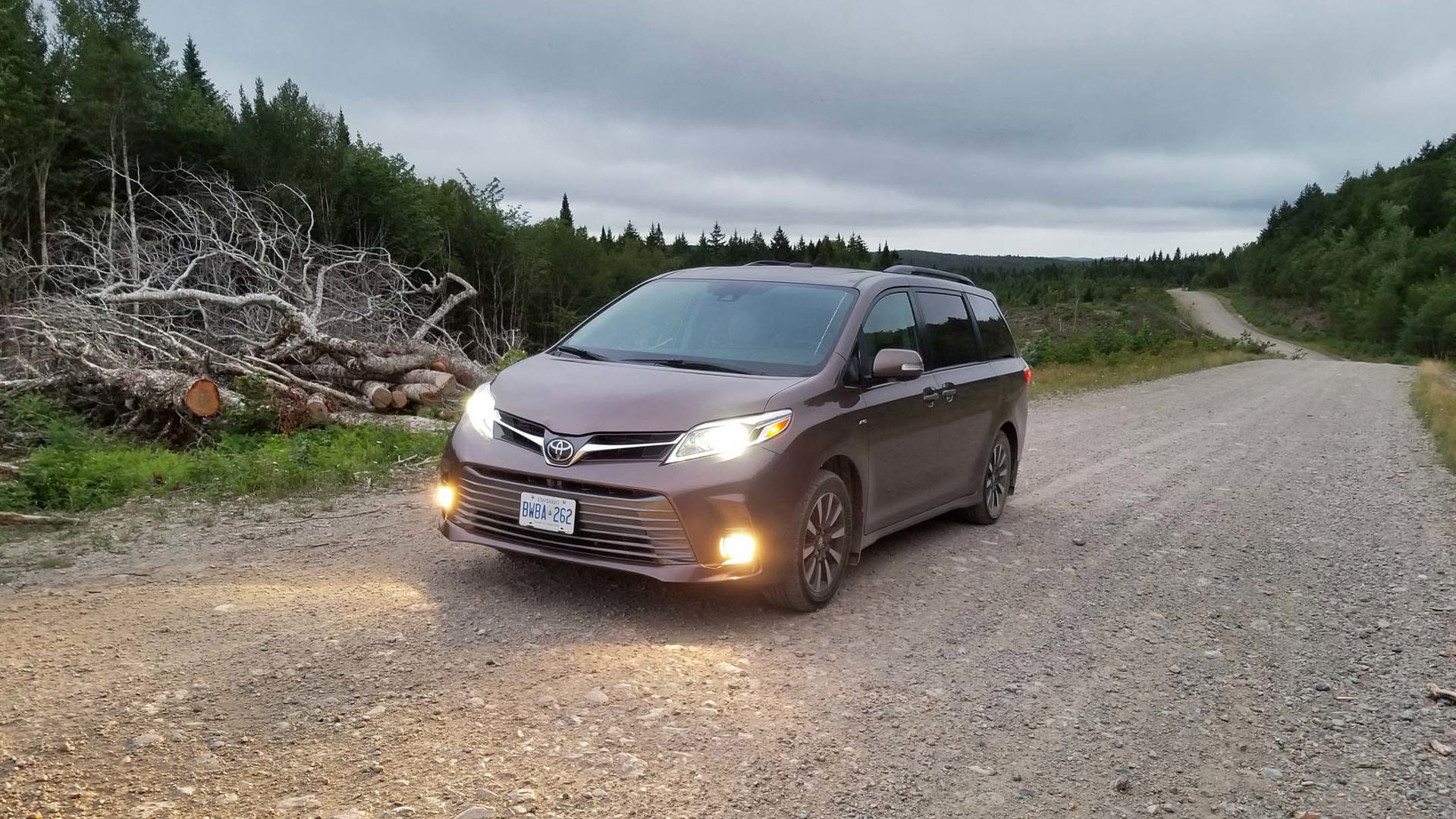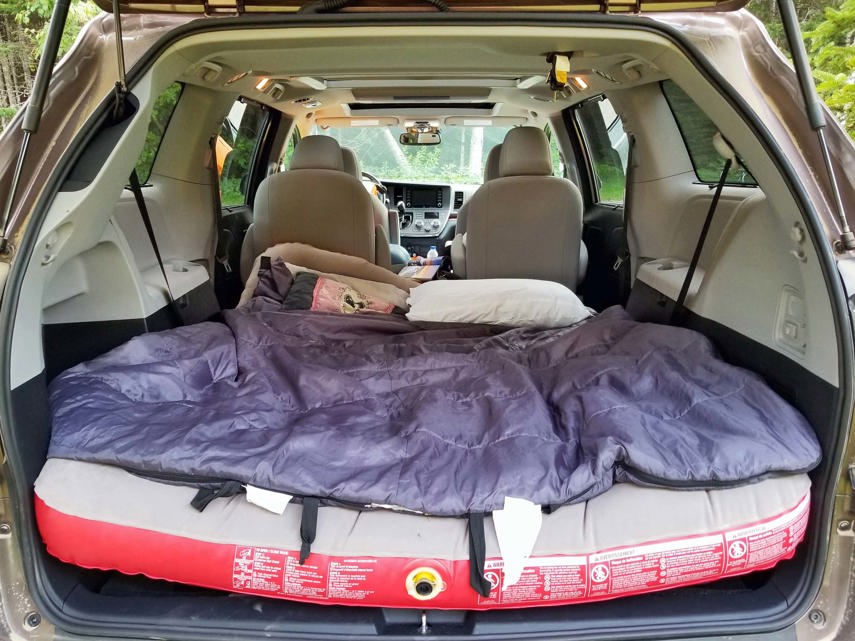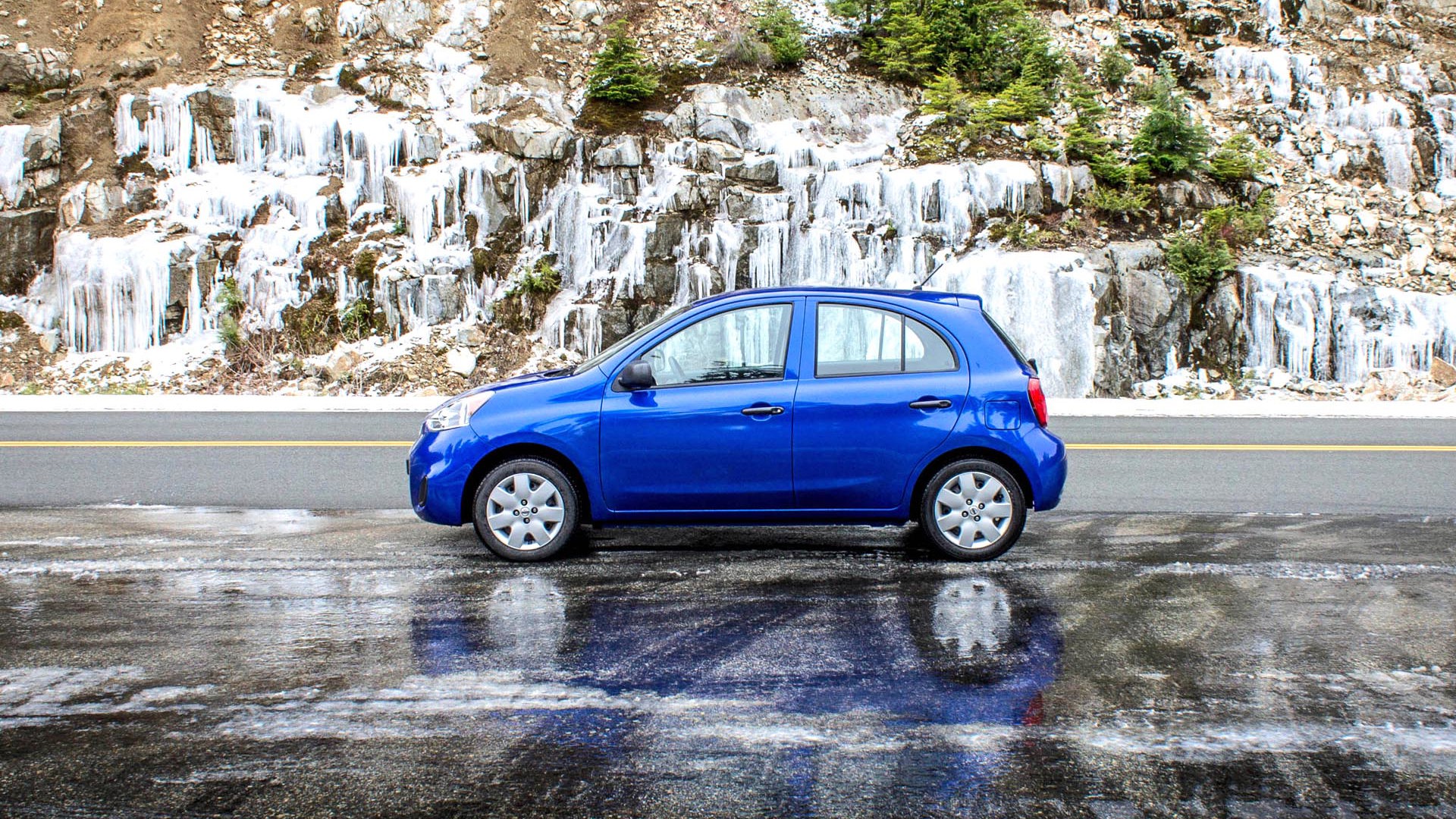I’m guilty of it, and you probably are too: I’ve underappreciated New Brunswick.
On a trip eastward from central Canada, those who never leave the Trans-Canada Highway might tend to see New Brunswick as a drive-through province, a necessary chore on the way to more scenic shores. Around four hours in, it starts to feel like little more than one big forest dotted with Irving Big Stops and an enormous army base.
The key, as with so many of this country’s beautiful places, is to actually leave the highway and have a look around. (Ever seen the movie Cars? Same concept: the world’s shining gems are never on the freeway.)
There’s a lot to be discovered along New Brunswick’s share of the shores of the Bay of Fundy, and it reveals a depth to the province that could very well surprise you.
Family Fun at Fundy National Park
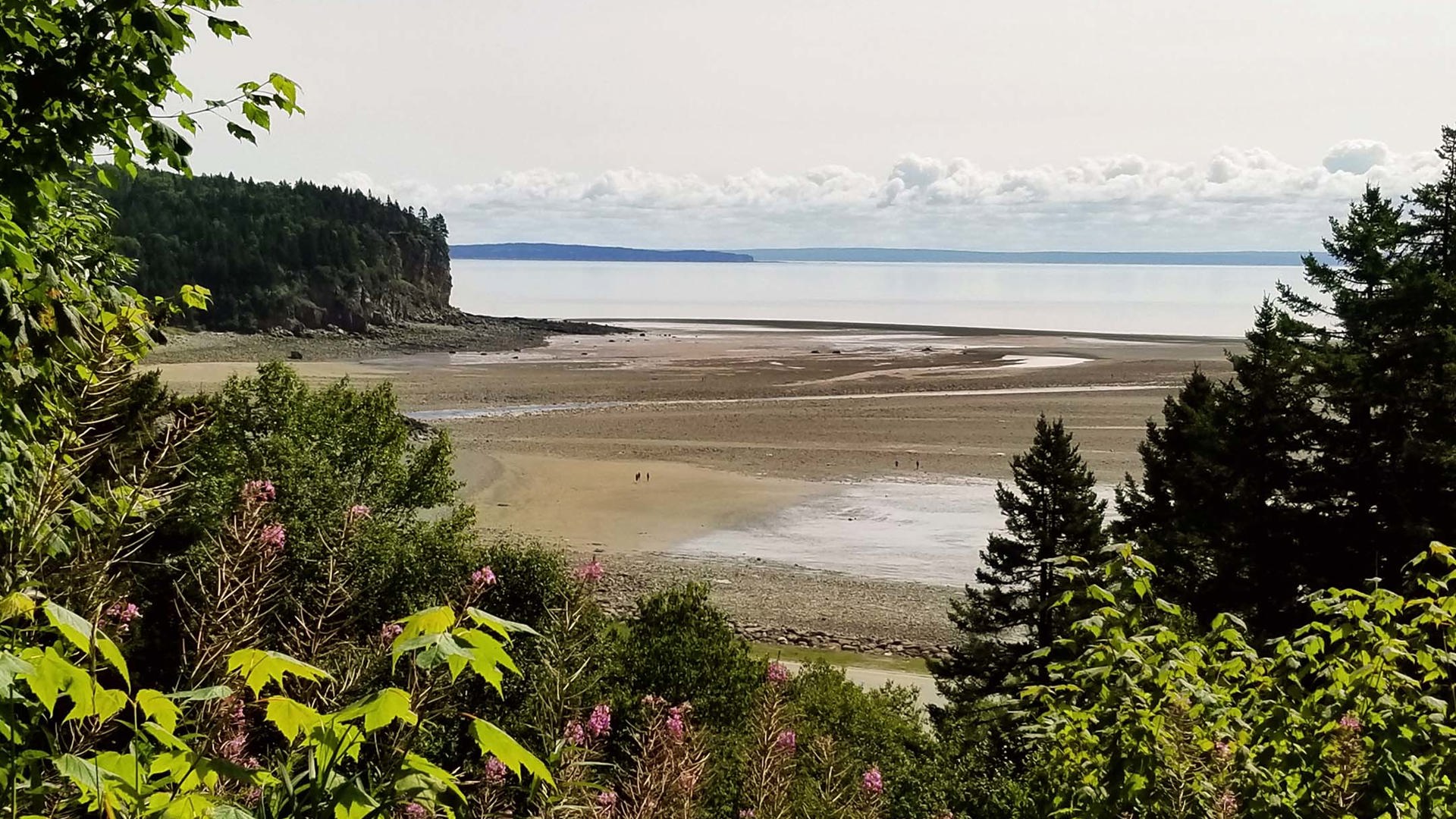
Fundy National Park exists for precisely the reason one would expect: to protect a portion of the coastline that hosts the world’s highest tides and keep it accessible for all.
That aspect of the park is wonderful, and it would be quite easy to sit on a bench for hours and do nothing but be fascinated by the changing landscape provided by the rising and falling waters.
But that part of the visit is expected. It’s the unexpected part that will keep us coming back, the amazing diversity of experiences available to visitors of all ages.
The typical national park experience is easy enough to find here, the one that most people think of, with rustic camping and many miles of hiking trails revealing dozens of waterfalls, breathtaking landscapes, and unique local wildlife.
There’s another option, though, that’s a perfect fit for families who are new to the camping-and-wilderness experience.
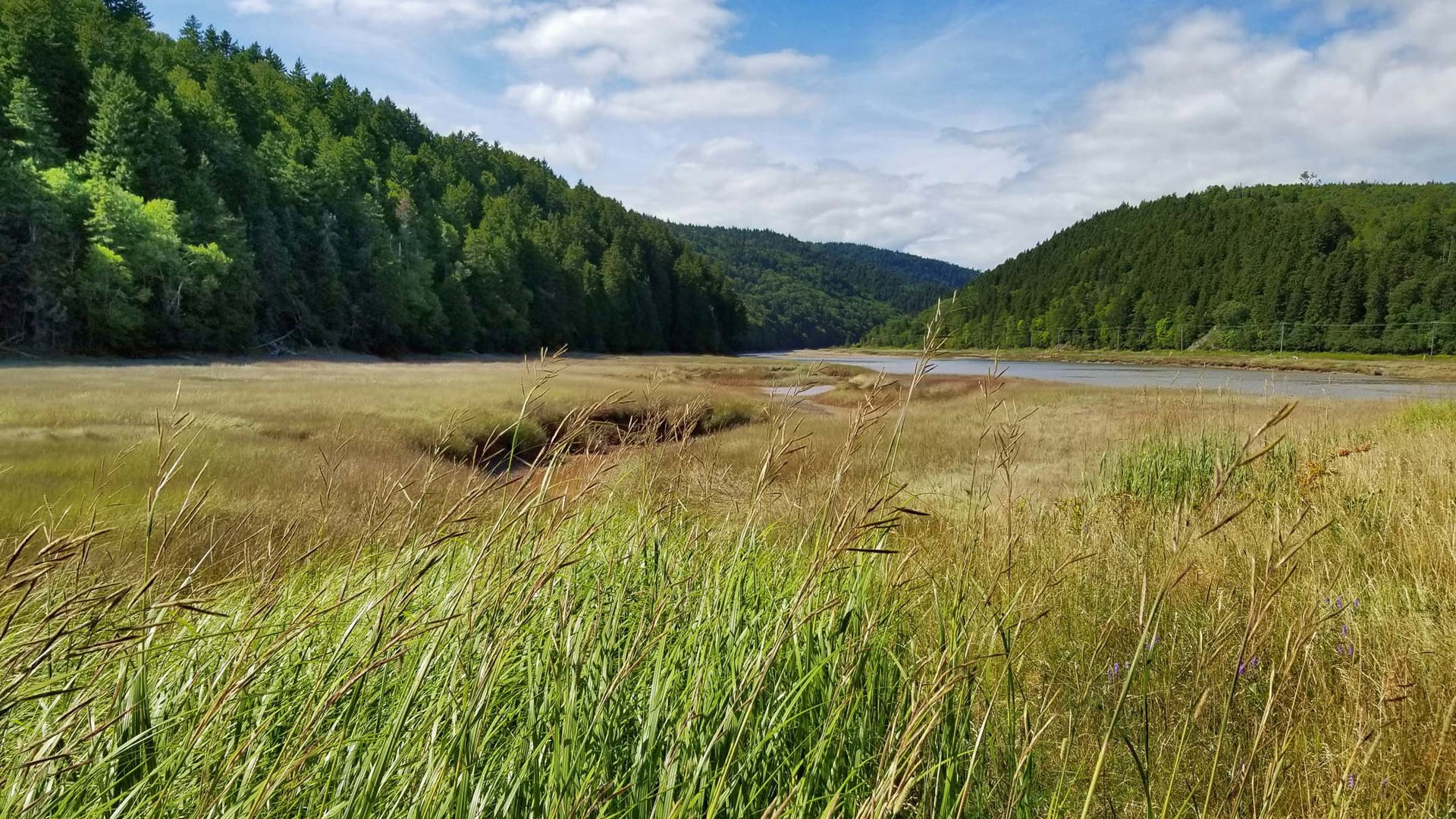
My daughter and I based ourselves out of Headquarters Campground during our visit and, apart from when we were leaving the park entirely, we never got into our car once. We walked across the road to spend time at the enormous natural playground with multiple ziplines and a slide built right into the side of the forest. We walked down to the saltwater pool to swim and play in the splash pad while overlooking the Bay of Fundy. (It’s possible to swim in the bay itself, but the water tends to be cold and the powerful currents can be a challenge.)
And at the end of the day, rather than eating camp food, we wandered down to the village of Alma and played at the beach before sitting down to dinner at Alma Lobster Shop. They plunk a whole lobster down in front of you on a tray lined with newspaper with a cup of hot garlic butter on the side, exactly as it should be.

All that walking gets tough since the park is very hilly, so many people choose to drive around instead. But whichever way you go about it, the whole experience comes off more like a family resort than a national park. Add to that the excellent Xplorers booklet full of engaging activities, and Fundy becomes a perfect choice for travellers looking to introduce young ones to outdoor experiences.
The one downside of Headquarters campground as opposed to the more remote options is that there are no individual campsite fire pits. Instead, there are a number of communal ones spread throughout the campground. I thought I would resent this, but I actually grew to love it. We roasted marshmallows with an extended Acadian family from Prince Edward Island, a couple in their golden years from Chicago, and a mother and daughter who, as it turns out, live just a few streets away from us in Toronto. It became a surprising and unexpected way to connect with new people and added to our trip enormously.
Powerful Tides at Hopewell Rocks
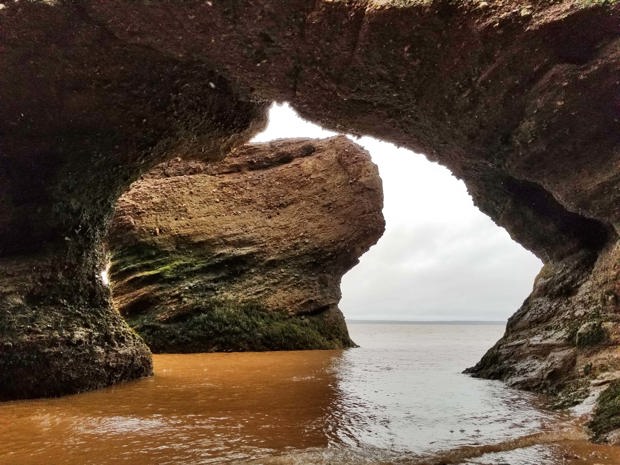
Arguably the most famous geological formation in New Brunswick, Hopewell Rocks is just over a half-hour drive away from the Headquarters section of Fundy National Park and puts the power of the Bay of Fundy’s tides into full view.
(One could counter that Magnetic Hill near Moncton is more famous, and that could very well be true. It’s a bit overdone and expensive for the two minutes of joy that rolling “uphill” brings, but should still be experienced by every kid at least once.)
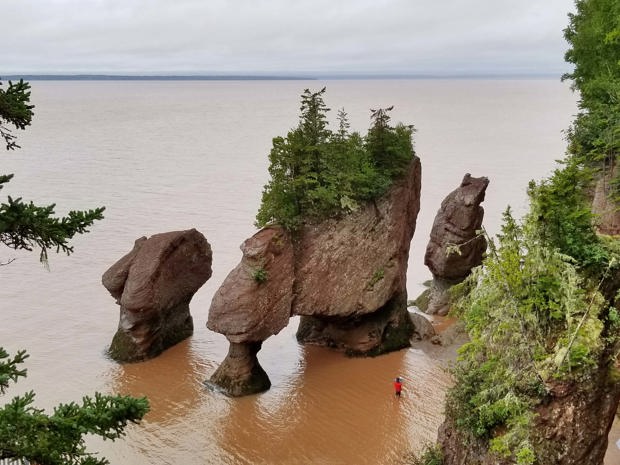
Just as dramatic as the Hopewell Rocks flowerpot rock formations, the Lovers’ Arch, and the caves carved into the cliffs by the undulating water, is the difference in the tide itself, which is easily observed even over the course of a short visit. The waters can shift up to 14 metres here between high and low tide depending on the time of year – an admission ticket is good for two days from the time of purchase so that it’s easy to come back and view the formations during various phases.
There are plenty of other formations further down the beach that can be reached by foot at low tide, but you’ll need to plan your arrival and departure time carefully. If you wait too long, you’ll find yourself scrambling for higher ground and waiting two to three hours for the tide to roll out enough to allow for your return trip!
Carleton Martello Tower and the City of Saint John
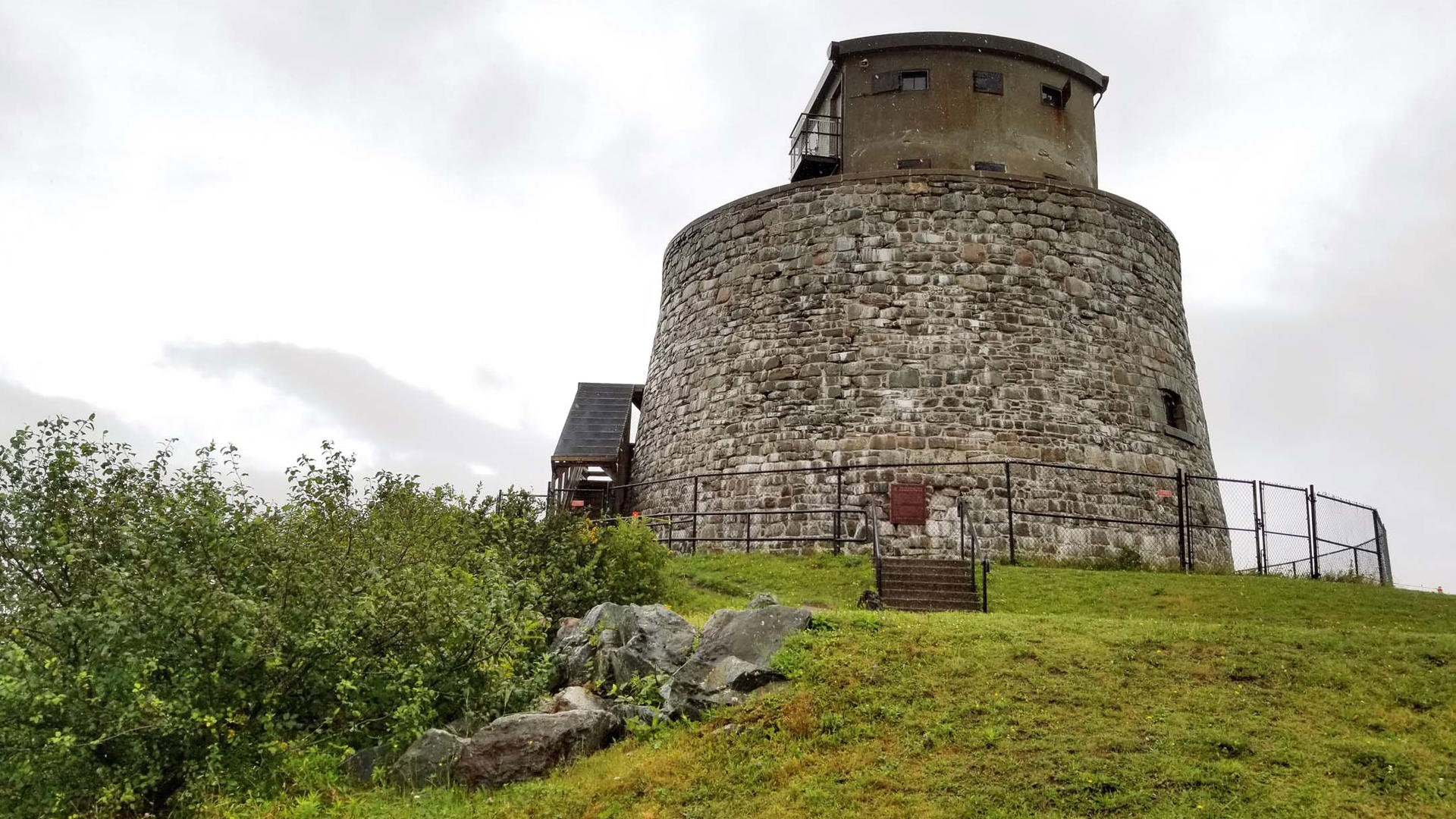
My daughter is an avid Parks Canada Xplorer, so when we woke up one morning to miserable weather, she was more than happy to pack up and head out for the hour-and-half drive to Saint John to pick up a new Xplorers tag at Carleton Martello Tower.
The tower overlooks the strategically important Saint John Harbour and was built during the War of 1812 by the British to protect the city from invasion by the Americans – not via the sea, which was already well-fortified, but over land from the west. It’s one of the best examples of a British Martello tower left in Canada, but unfortunately it’s in need of extensive repairs nonetheless. (A close-up look behind the barrier fence reveals sections where the rock is crumbling away on the outside.) That work is under way, which means that the interior of the tower is closed to visitors until 2020.
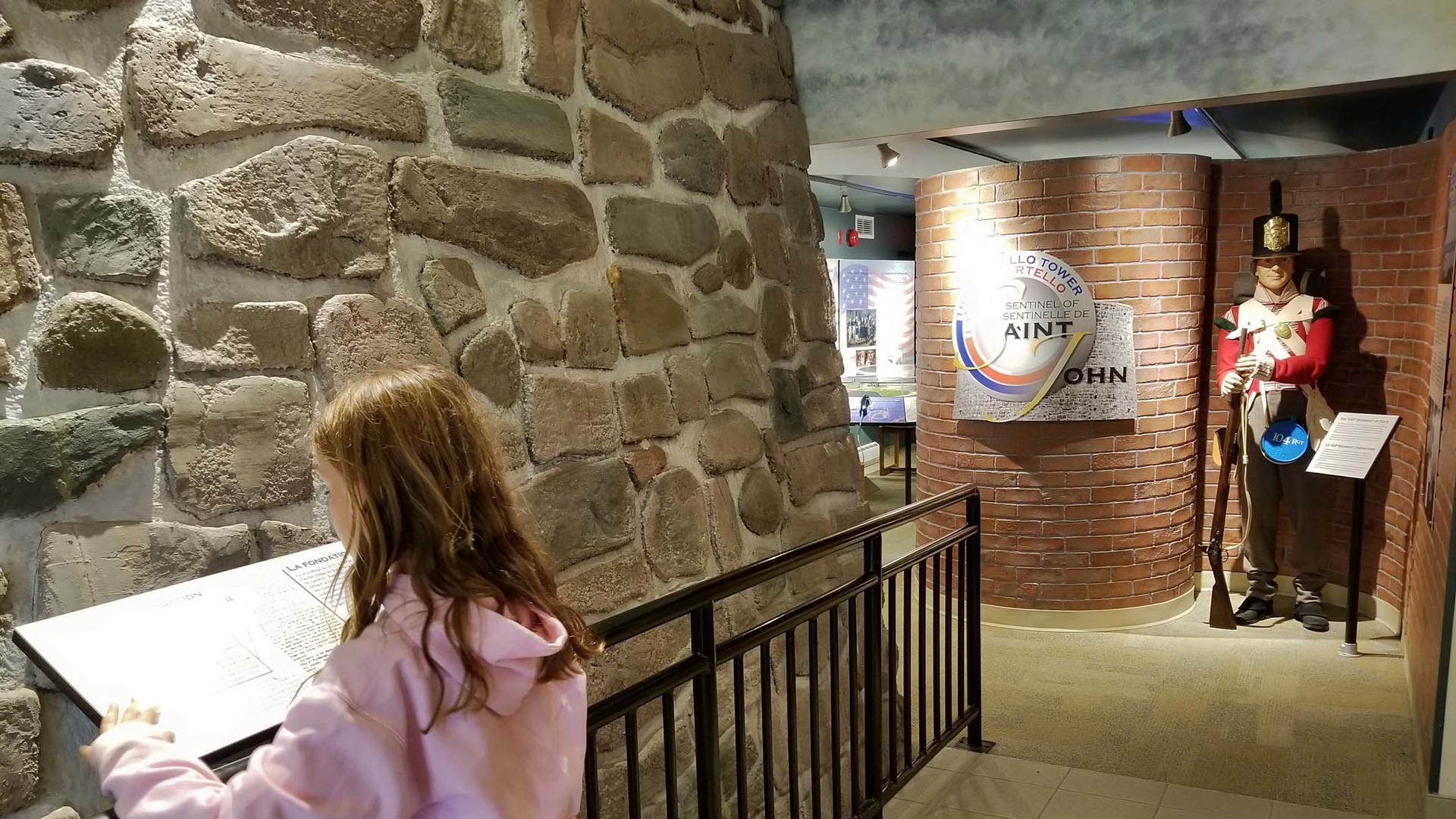
That said, we got a lot out of watching the entertaining short film about the tower’s history, which extends from its completion in 1815 (yes, that was just in time for the end of the War of 1812) through the Second World War. The lookout locations offer stunning views over the harbour, and the Xplorers booklet works around the lack of interior access well by focussing on activities involving the small exhibit in the visitor centre and around the tower’s outside. As rainy-day excursions go, this one worked out very well for us. It would also make for a good stopover on the way to the ferry to Digby, Nova Scotia.
With more time, we would have followed the advice of the Parks Canada interpreter who suggested that we check out the New Brunswick Museum and its full mastodon and whale skeletons, and the City Market, the oldest continuously operating farmers’ market in Canada. Saint John is a beautiful city, and it would be very easy to spend a day or more here on its own.
Covered Bridges and Potato Chips
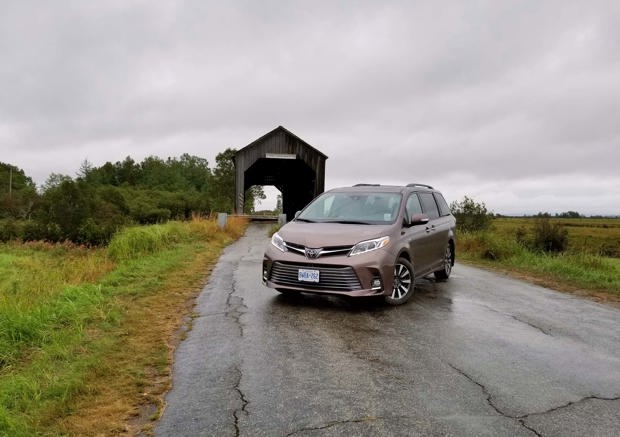
There are historic covered bridges throughout New Brunswick, all clearly marked by road signs, and each seems to have its own claim to fame. The one I stopped at for a photo dates from 1905 and is the oldest still in existence along Highway 114, the road that loops south from Highway 1 through Fundy National Park and northward again into Moncton.
The longest covered bridge in the world is in Hartland, NB, spanning 1,282 ft (391 metres) across the Saint John River. The town is now nearly as famous for its namesake snack, Covered Bridge Potato Chips, which is run by potato farmers and hosts self-guided tours and a gift shop at its facility just off the Trans-Canada Highway. The company is famous for unusual, sometimes limited-edition flavours – like lobster, donair, loaded hot dog, and Montreal steak spice – along with other oddities like chocolate-dipped chips and a large wall of pick-and-choose flavours of saltwater taffy.
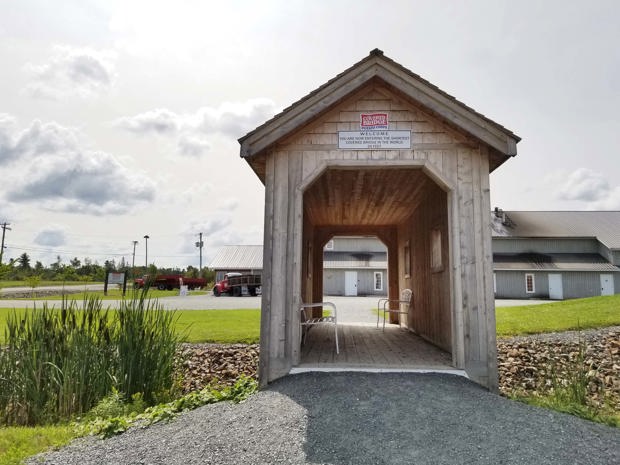
I always mean to stop here but usually miss the exit because it comes up very quickly. I’ve got it down pat now, so I can share: it’s off exit 172, about halfway between Florenceville-Bristol to the north and Woodstock to the south.
One Last Look into History
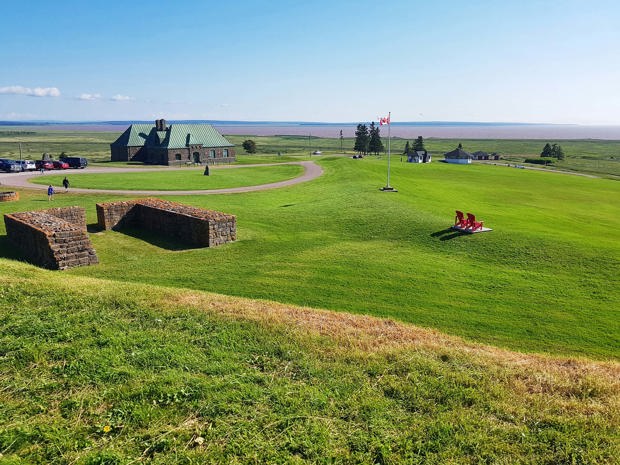
If your journey will take you further to the east, there’s one last stop worth making before you go.
Just shy of the provincial border in Aulac, just a couple of minutes off the highway, you’ll find Fort Beauséjour–Fort Cumberland National Historic Site.
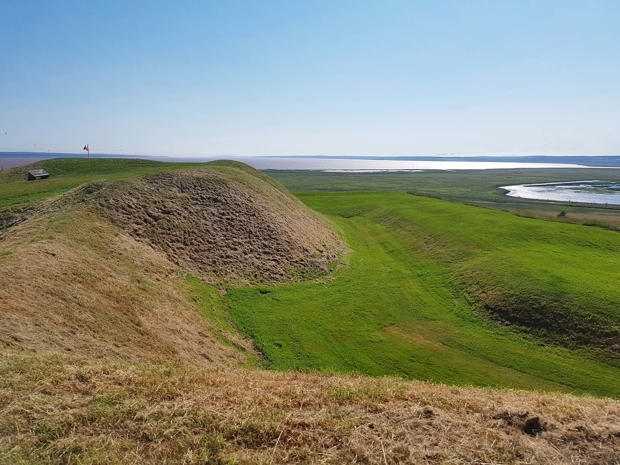
It was enormous once upon a time, and while not a great deal of the fort remains today, it has plenty of stories to tell. Built by the French and overtaken by the British, the Acadians launched a resistance attempt here during the deportation period in the mid-1700s.
If neither historic exploration nor Xplorers-collecting are of interest to your group, this place is still worth a stop for the views of the northeast terminus of the Bay of Fundy alone.
For Road Trips, Minivans Rule
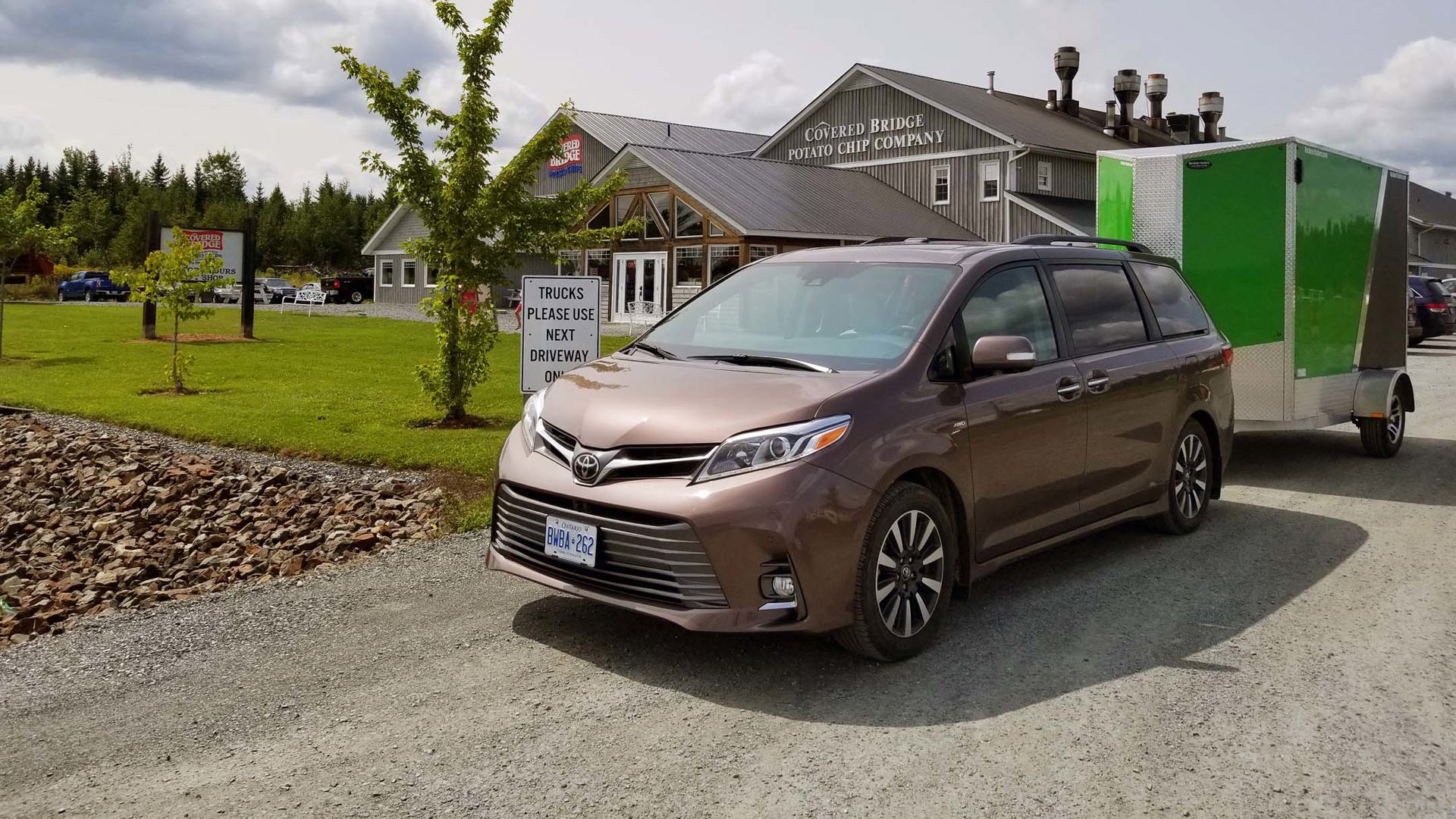
On this trip, we put more than 3,000 km on a 2018 Toyota Sienna XLE. It dealt handily with absolutely everything we threw at it – and we threw a lot at it.
For most of the drive, we towed 1,800 pounds worth of trailer and motorbikes. It worked the eight-speed automatic transmission pretty hard and the 3.5-litre V6 and its 296 horses used a lot of fuel, mostly because our trailer is eight feet tall and adds a lot of drag. We ended the first towing leg at 22.1 L/100 km, which meant that we had to stop a lot due to the standard-size fuel tank, but it otherwise got the job done well.
After dropping my husband and the trailer off for a weekend at the Fundy Adventure Rally, I made a right turn out of the rally headquarters and found myself stuck driving through 18 km of dusty, rocky, rutted, dirt roads to get back to the highway, the sort that most people think of as being reserved for SUVs. I had to dodge a few more stones than I would have in a vehicle with more ground clearance, but the Sienna’s all-wheel drive system pulled us through the rest of it just fine.
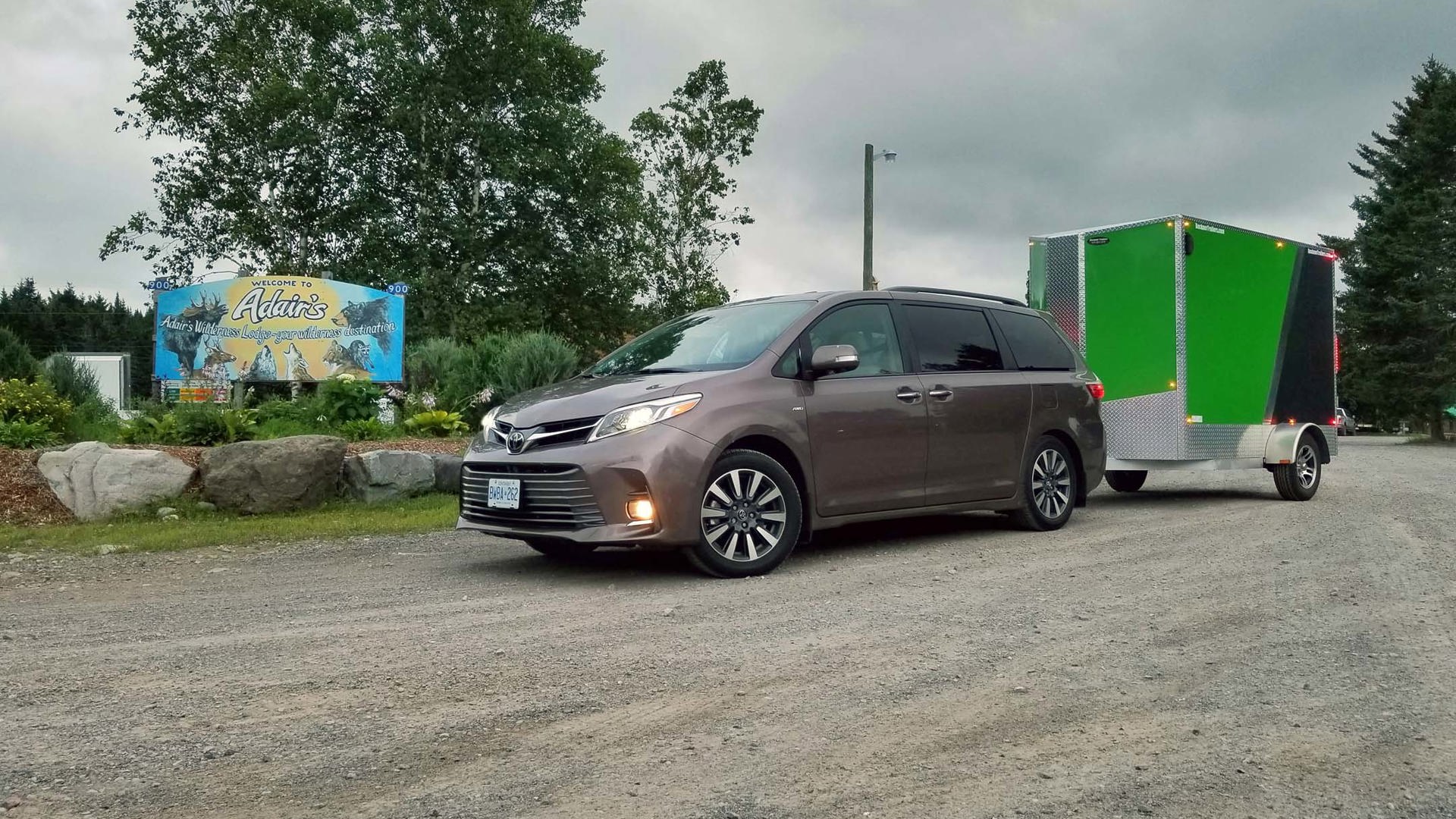
The Sienna is still the only minivan in Canada with available all-wheel drive, and that’s worth something. We talk a lot about how all-wheel drive doesn’t help as much in winter weather as a good set of tires does, and that’s valid. But it’s easy to forget that driving this country can land us on dodgy roads with no notice in any kind of weather. If you ever leave the city, all-wheel drive certainly has its merits.
Once we got to the campground, we discovered that an enormous amount of rain was coming on the last day of our trip. Rather than having to put away a sodden tent and rain cover, one of my least-favourite tasks on the planet, we decided to try setting up camp right in the back of the Sienna instead. And it worked out beautifully. Sure, a van with fully retractable rear seats would have given us even more room, but even with the Sienna’s second-row seats pulled all the way forward and the third row stowed I was able to put down a double air mattress and lay my 5'7" frame fully flat. I think we slept better in the Sienna than we did the last time we tried our tent. Talk about versatility!
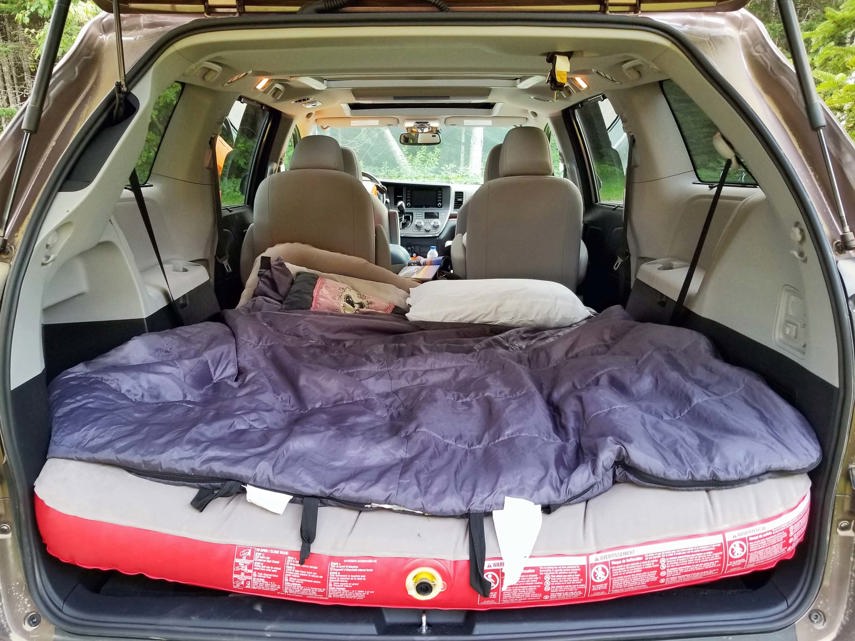
The 2018 Sienna gets a mid-model refresh, which means it’s sporting a new grille, front fascia, and headlight design. The Toyota Safety Sense P suite of technologies is standard, which includes pre-collision with pedestrian detection, lane-departure alert with steering assist, automatic high-beams, and dynamic cruise control.
It also has an updated infotainment system, and while this one doesn’t have Apple CarPlay just yet and no Toyotas come with Android Auto, this system is a significant improvement over the previous version. Voice commands are much more effective, and the navigation system and audio functionality are both vastly improved. The controls on the right side of the screen are still hard to reach from the driver’s seat, but that’s easier to forgive when everything around them works well.
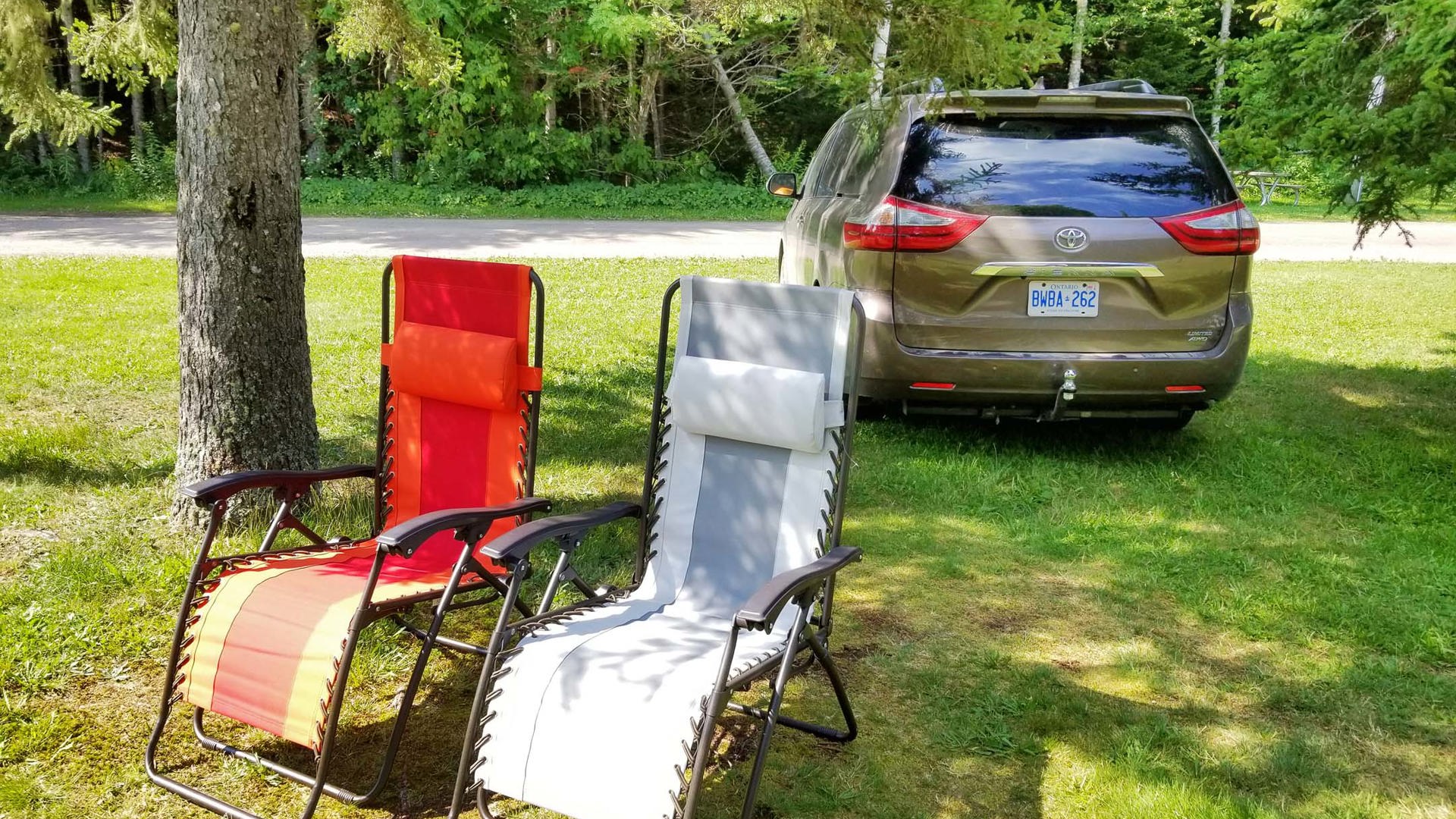
The items remaining on my wishlist for it are a turbocharged engine option, sharper steering response, tighter handling, more comfortable seats, and a quieter cabin. But even without these, the Sienna remains one of the most practical vehicles on the market today, full stop.
